
LLMGA
This project is the official implementation of 'LLMGA: Multimodal Large Language Model based Generation Assistant', ECCV2024
Stars: 305
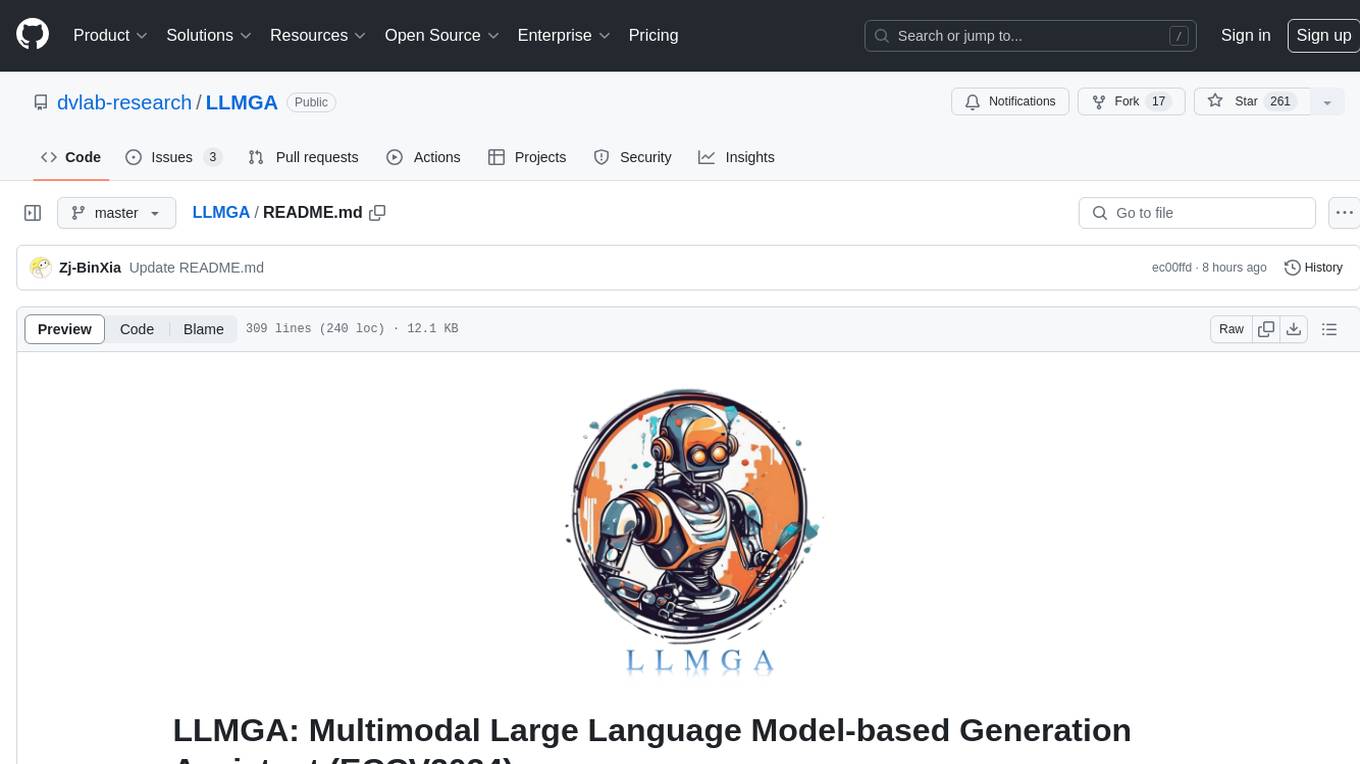
LLMGA (Multimodal Large Language Model-based Generation Assistant) is a tool that leverages Large Language Models (LLMs) to assist users in image generation and editing. It provides detailed language generation prompts for precise control over Stable Diffusion (SD), resulting in more intricate and precise content in generated images. The tool curates a dataset for prompt refinement, similar image generation, inpainting & outpainting, and visual question answering. It offers a two-stage training scheme to optimize SD alignment and a reference-based restoration network to alleviate texture, brightness, and contrast disparities in image editing. LLMGA shows promising generative capabilities and enables wider applications in an interactive manner.
README:
Bin Xia, Shiyin Wang, Yingfan Tao, Yitong Wang, and Jiaya Jia
New Version (Accepted by ECCV2024):
- [x] [2024.07.06] The finetuned SD15 models have been released, including SD15-T2I and SD15-inpainting. Notably, our SD15-T2I model can also be used for instruction-based editing of LLMGA.
- [x] [2024.07.06] The finetuned SDXL models have been released, including SDXL-T2I and SDXL-inpainting.
- [x] [2024.07.06] The pre-trained models, which further support Chinese (obtained by further fine-tuned on mixed Chinese and English data), have been released, including llmga-cn-vicuna 7b, llmga-cn-llama3 8b, llmga-cn-gemma 2b, and llmga-cn-qwen2 0.5b.
- [x] [2024.07.06] We release new version LLMGA's training datasets, including texts and images.
- [x] [2024.07.05] The pre-trained model has been released, including llmga-vicuna 7b, llmga-mistral 7b, llmga-llama3 8b, llmga-vicuna7b, llmga-qwen2 0.5b, llmga-qwen2 1.5b, llmga-qwen2 7b, llmga-phi3 3b, and llmga-gemma 2b.
- [x] [2024.07.05] The code has been updated.
- [x] [2024.07.04] I am organizing and uploading the new version of the LLMGA code and the dataset and model. I will have a status update when I complete this process, please wait for me for a few days. Notably, in this new version, we build our LLMGA on different base LLM models, such as Llama2 7b, Mistral 7b, LLama3 8b, Qwen2 0.5b, Qwen2 1.5b, Qwen2 7b, Phi3 3b, and gemma 2b. They have different performance and model sizes, as well as commercial licenses, there is always one that can meet your usage scenario.
Old Version:
- [x] [2023.12.20] We release LLMGA's [training datasets].
- [x] [2023.12.20] We release the gradio codes of LLMGA7b-SDXL-T2I.
- [x] [2023.12.08] We release LLMGA7b-SDXL-T2I [demo].
- [x] [2023.11.30] We have released the code for DiffRIR. It can effectively eliminate differences in brightness, contrast, and texture between generated and preserved regions in inpainting and outpainting. Considering its applicability to projects beyond LLMGA, we have open-sourced it at Github.
- [x] [2023.11.29] The models is released at [Huggingface].
- [x] [2023.11.29] The training and inference code is released.
- [x] [2023.11.29] We will upload all models, code, and data within a week and further refine this project.
- [x] [2023.11.28] GitHub repo is created.
Abstract: In this paper, we introduce a Multimodal Large Language Model-based Generation Assistant (LLMGA), leveraging the vast reservoir of knowledge and proficiency in reasoning, comprehension, and response inherent in Large Language Models (LLMs) to assist users in image generation and editing. Diverging from existing approaches where Multimodal Large Language Models (MLLMs) generate fixed-size embeddings to control Stable Diffusion (SD), our LLMGA provides a detailed language generation prompt for precise control over SD. This not only augments LLM context understanding but also reduces noise in generation prompts, yields images with more intricate and precise content, and elevates the interpretability of the network. To this end, we curate a comprehensive dataset comprising prompt refinement, similar image generation, inpainting & outpainting, and instruction-based editing. Moreover, we propose a two-stage training scheme. In the first stage, we train the MLLM to grasp the properties of image generation and editing, enabling it to generate detailed prompts. In the second stage, we optimize SD to align with the MLLM's generation prompts. Additionally, we propose a reference-based restoration network to alleviate texture, brightness, and contrast disparities between generated and preserved regions during inpainting and outpainting. Extensive results show that LLMGA has promising generation and editing capabilities and can enable more flexible and expansive applications in an interactive manner.
- [x] Generation Assiatant. As a unified system, LLMGA can generate and edit images using methods such as Text-to-Image (T2I), inpainting, outpainting, and instruction-based editing through conversational interactions with users. By leveraging the extensive knowledge and understanding of image design from LLMGA, users can easily produce and revise images to obtain highly satisfactory images.
- [x] Design Expert. LLMGA incorporates an extensive array of image design data, offering deep insights for a wide range of design tasks, including logo creation, game character design, poster design, T-shirt design, infographic design, and more.
- [x] Illustration Generation. LLMGA can interactively generate story illustrations based on user-input story snippets.
- [x] Picture Book Generation. With a single user's instruction, LLMGA can generate an interwoven storybook of text and illustrations.
- [x] Multilingual Support.Through the multilingual adaptation of the LLMGA, T2I and editing model can generate content using Chinese language instructions.
- [x] Flexible Expansion. LLMGA offers enhanced flexibility by integrating with external plugins like ControlNet, enabling a wider range of functionalities.
- [x] To be continued ......
- [x] Support gradio demo.
- [ ] Support more generation models
Please follow the instructions below to install the required packages.
- Clone this repository
git clone https://github.com/dvlab-research/LLMGA.git- Install Package
conda create -n llmga python=3.9 -y
conda activate llmga
cd LLMGA
pip install --upgrade pip # enable PEP 660 support
pip install -e .
cd ./llmga/diffusers
pip install . - Install additional packages for training cases
pip install -e ".[train]"
pip install -r requirements.txt
pip install flash-attn --no-build-isolation
pip install datasets
pip install albumentations
pip install ninjaWe provide the training data for LLMGA training.
please download LLMGA datasets and LLaVA pretrain datasets.
Besides, download LLaVA1.5 instruction tuning datasets llava_v1_5_mix665k.json, and download the images from constituting datasets:
- COCO: train2017
- GQA: images
- OCR-VQA: download script, we save all files as
.jpg - TextVQA: train_val_images
- VisualGenome: part1, part2.
Please organize these downloaded data as in Structure.
We recommend users to download the pretrained MLP projector weights. Then put them in ./checkpoints following Structure.
Please download MLLM Models and SD models from the following links. For example, you can download LLMGA-MLLM7b and LLMGA-SDXL-T2I to realize LLMGA7b-T2I functionality. Please organize them as in Structure.
| MLLM Model (support English) | Pretrained Models |
|---|---|
| llmga-vicuna 7b | Download |
| llmga-mistral 7b | Download |
| llmga-llama3 8b | Download |
| llmga-qwen2 0.5b | Download |
| llmga-qwen2 1.5b | Download |
| llmga-qwen2 7b | Download |
| llmga-phi3 3b | Download |
| llmga-gemma 2b | Download |
| MLLM Model (further support Chinese and English) | Pretrained Models |
|---|---|
| llmga-cn-vicuna 7b | Download |
| llmga-cn-llama3 8b | Download |
| llmga-cn-gemma 2b | Download |
| llmga-cn-qwen2 0.5b | Download |
| SD Model | Pretrained Models |
|---|---|
| LLMGA-SD15-T2I | Download |
| LLMGA-SD15-Inpainting | Download |
| LLMGA-SDXL-T2I | Download |
| LLMGA-SDXL-Inpainting | Download |
The folder structure should be organized as follows before training.
LLMGA
├── llmga
├── scripts
├── work_dirs
├── checkpoints
│ ├── llmga-Phi-3-mini-128k-pretrain
│ ├── llmga-Qwen2-0.5B-pretrain
│ ├── llmga-llama3-8b-pretrain
│ ├── llmga-mistral-pretrain
│ ├── llmga-vicuna-7b-v1.5-pretrain
│ ├── llmga-Phi-3-mini-128k-full-finetune
│ ├── llmga-Qwen2-0.5B-full-finetune
│ ├── llmga-llama3-8b-it-full-finetune
│ ├── llmga-mistral_instruct-full-finetune
│ ├── llmga-vicuna-7b-v1.5-full-finetune
│ ├── llmga-cn-vicuna-7b-v1.5-full-finetune
│ ├── llmga-cn-Qwen2-0.5B-full-finetune
│ ├── llmga-sdxl-t2i
│ ├── llmga-sd15-inpainting-v2
│ ├── llmga-sd15-t2i-v2
├── data
│ │── jsons
│ │ ├── llmga-data
│ │ │ ├── Edit/train.json
│ │ │ ├── inpainting/train.json
│ │ │ ├── SG/train.json
│ │ │ ├── T2I/train.json
│ │ ├── text-data
│ │ │ ├── alpaca_gpt4_sharegpt_en_clean2.json
│ │ │ ├── lima.json
│ │ │ ├── oasst2.json
│ │ ├── llava_v1_5_mix665k.json
│ ├── llmga-imgs
│ │ ├── COCO
│ │ ├── LAION
│ │ ├── JourneyDB
│ ├── llava_pretrain
│ │ ├──images
│ ├── llava-imgs
│ │ ├── coco
│ │ │ ├── train2017
│ │ ├── gqa
│ │ │ ├── images
│ │ ├── ocr_vqa
│ │ │ ├── images
│ │ ├── textvqa
│ │ │ ├── train_images
│ │ ├── vg
│ │ │ ├── VG_100K
│ │ │ ├── VG_100K_2
LLMGA is trained on 8 A100 GPUs with 80GB memory. To train on fewer GPUs, you can reduce the per_device_train_batch_size and increase the gradient_accumulation_steps accordingly. Always keep the global batch size the same: per_device_train_batch_size x gradient_accumulation_steps x num_gpus.
Please make sure you download and organize the data following Preparation before training. Here, we just take training llmga vicuna 7b as an example. For more model training scripts, please check the ./scripts folder.
bash scripts/pretrain_vicuna_7b.shbash scripts/train_llmga_s1_7b_vicuna.shtrain LLMGA based on SD1.5-T2I
bash scripts/train_llmga_s2_sd15_t2i.shtrain LLMGA based on SD1.5-Inpainting
bash scripts/train_llmga_s2_sd15_inpaint.shUse LLMGA without the need of Gradio interface. It also supports multiple GPUs, 4-bit and 8-bit quantized inference. With 4-bit quantization. Here, we just give some examples for T2I, inpainting and instruction-based editing. For more model inference scripts, please check the ./scripts folder.
For T2I generation task.
bash scripts/test-llmga-sdxl-t2i.shFor inpainting or outpainting task.
bash scripts/test-llmga-sd15-inpainting.shFor instruction based editing task.
bash scripts/test-llmga-sd15-editing.shbash scripts/run_gradio_t2i.shIf you find this repo useful for your research, please consider citing the paper
@article{xia2023llmga,
title={LLMGA: Multimodal Large Language Model based Generation Assistant},
author={Xia, Bin and Wang, Shiyin, and Tao, Yingfan and Wang, Yitong and Jia, Jiaya},
journal={ECCV},
year={2024}
}
We would like to thank the following repos for their great work:
For Tasks:
Click tags to check more tools for each tasksFor Jobs:
Alternative AI tools for LLMGA
Similar Open Source Tools

LLMGA
LLMGA (Multimodal Large Language Model-based Generation Assistant) is a tool that leverages Large Language Models (LLMs) to assist users in image generation and editing. It provides detailed language generation prompts for precise control over Stable Diffusion (SD), resulting in more intricate and precise content in generated images. The tool curates a dataset for prompt refinement, similar image generation, inpainting & outpainting, and visual question answering. It offers a two-stage training scheme to optimize SD alignment and a reference-based restoration network to alleviate texture, brightness, and contrast disparities in image editing. LLMGA shows promising generative capabilities and enables wider applications in an interactive manner.
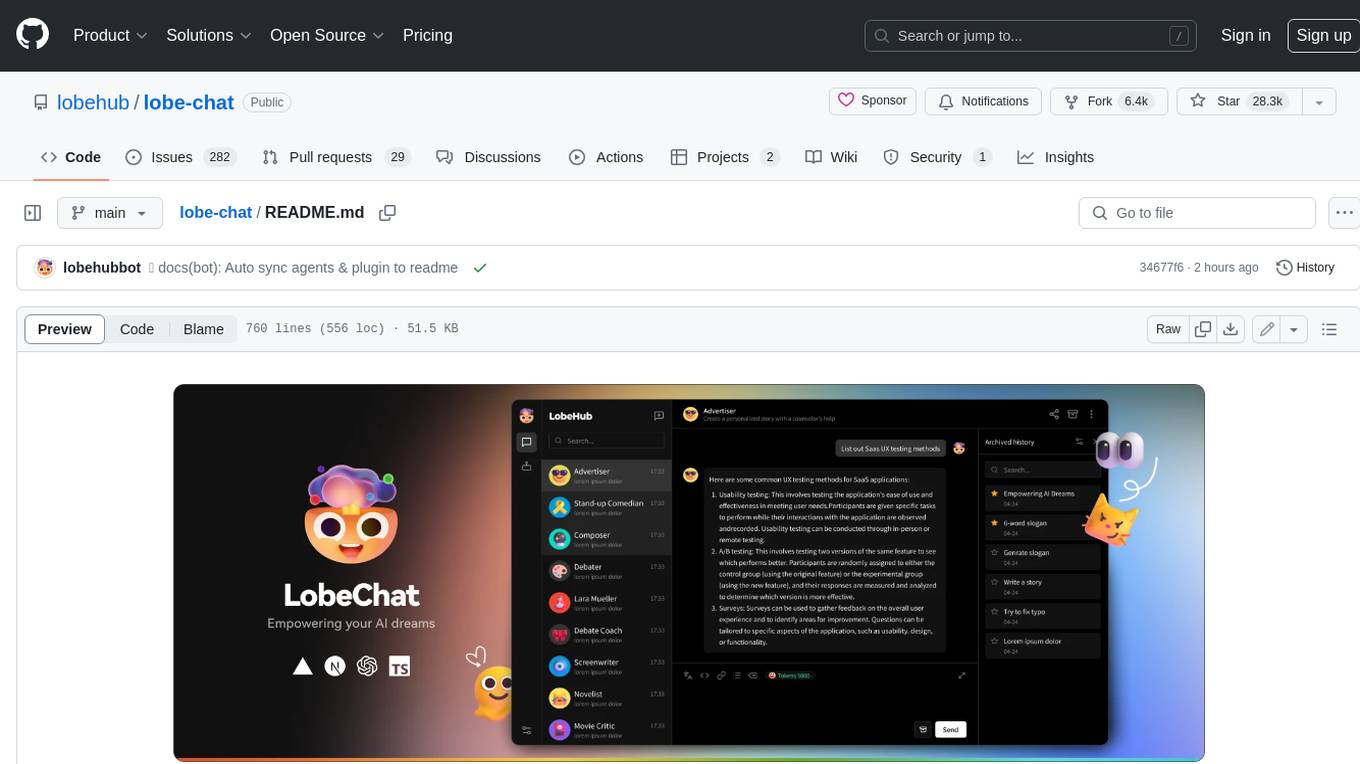
lobe-chat
Lobe Chat is an open-source, modern-design ChatGPT/LLMs UI/Framework. Supports speech-synthesis, multi-modal, and extensible ([function call][docs-functionc-call]) plugin system. One-click **FREE** deployment of your private OpenAI ChatGPT/Claude/Gemini/Groq/Ollama chat application.
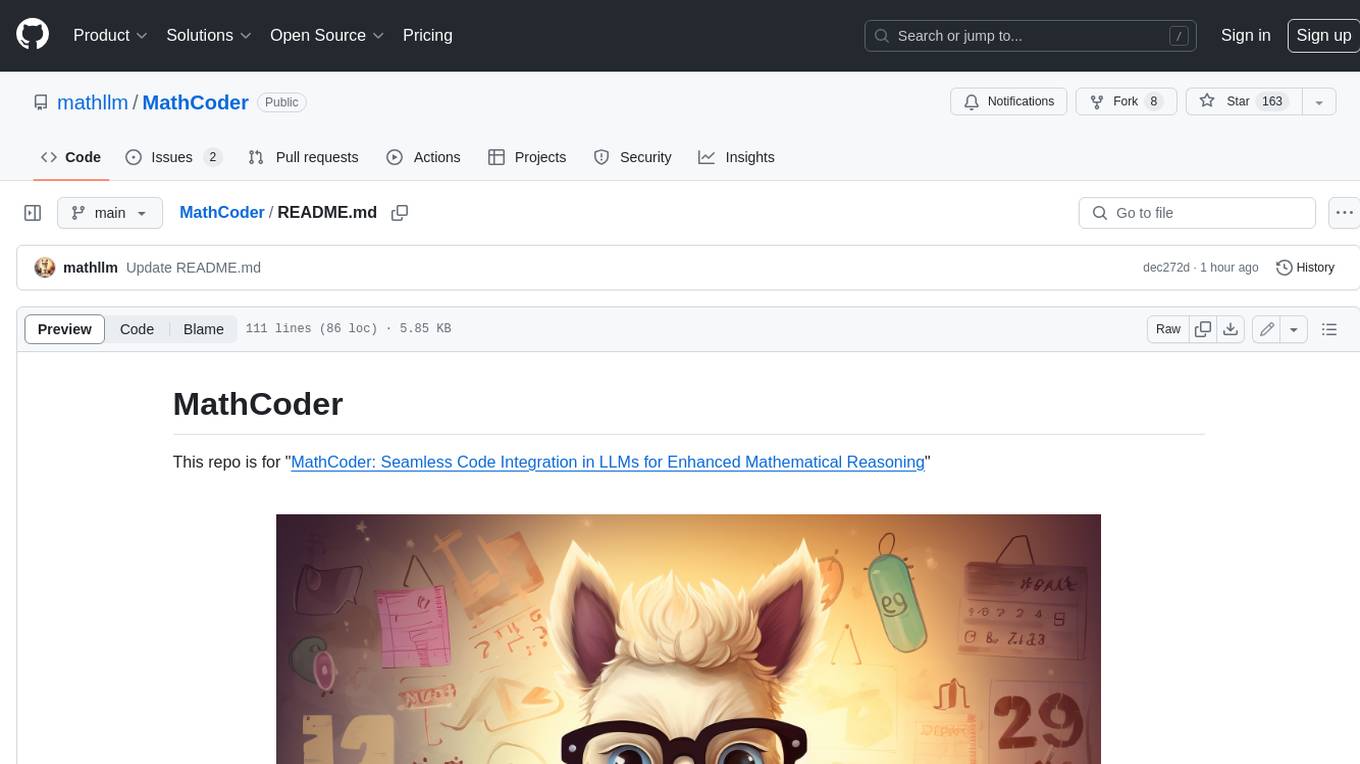
MathCoder
MathCoder is a repository focused on enhancing mathematical reasoning by fine-tuning open-source language models to use code for modeling and deriving math equations. It introduces MathCodeInstruct dataset with solutions interleaving natural language, code, and execution results. The repository provides MathCoder models capable of generating code-based solutions for challenging math problems, achieving state-of-the-art scores on MATH and GSM8K datasets. It offers tools for model deployment, inference, and evaluation, along with a citation for referencing the work.
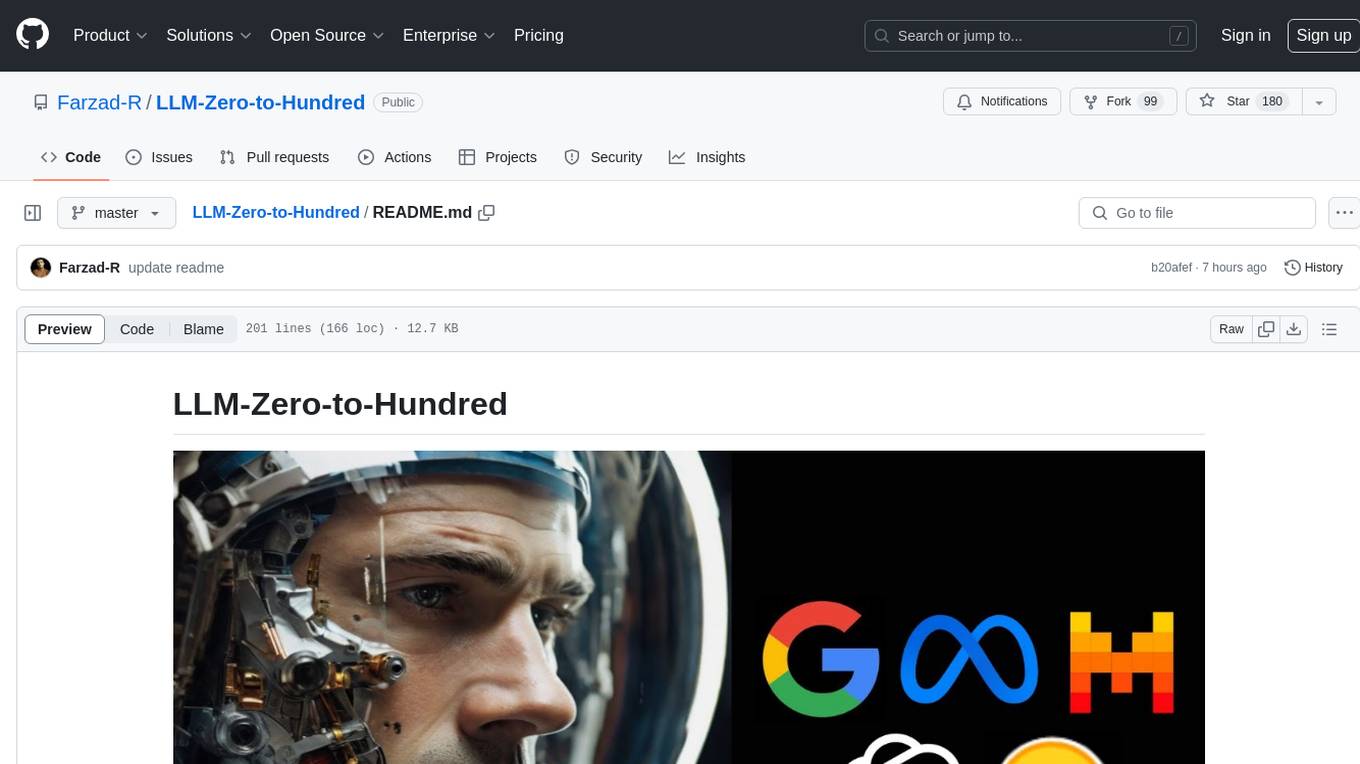
LLM-Zero-to-Hundred
LLM-Zero-to-Hundred is a repository showcasing various applications of LLM chatbots and providing insights into training and fine-tuning Language Models. It includes projects like WebGPT, RAG-GPT, WebRAGQuery, LLM Full Finetuning, RAG-Master LLamaindex vs Langchain, open-source-RAG-GEMMA, and HUMAIN: Advanced Multimodal, Multitask Chatbot. The projects cover features like ChatGPT-like interaction, RAG capabilities, image generation and understanding, DuckDuckGo integration, summarization, text and voice interaction, and memory access. Tutorials include LLM Function Calling and Visualizing Text Vectorization. The projects have a general structure with folders for README, HELPER, .env, configs, data, src, images, and utils.
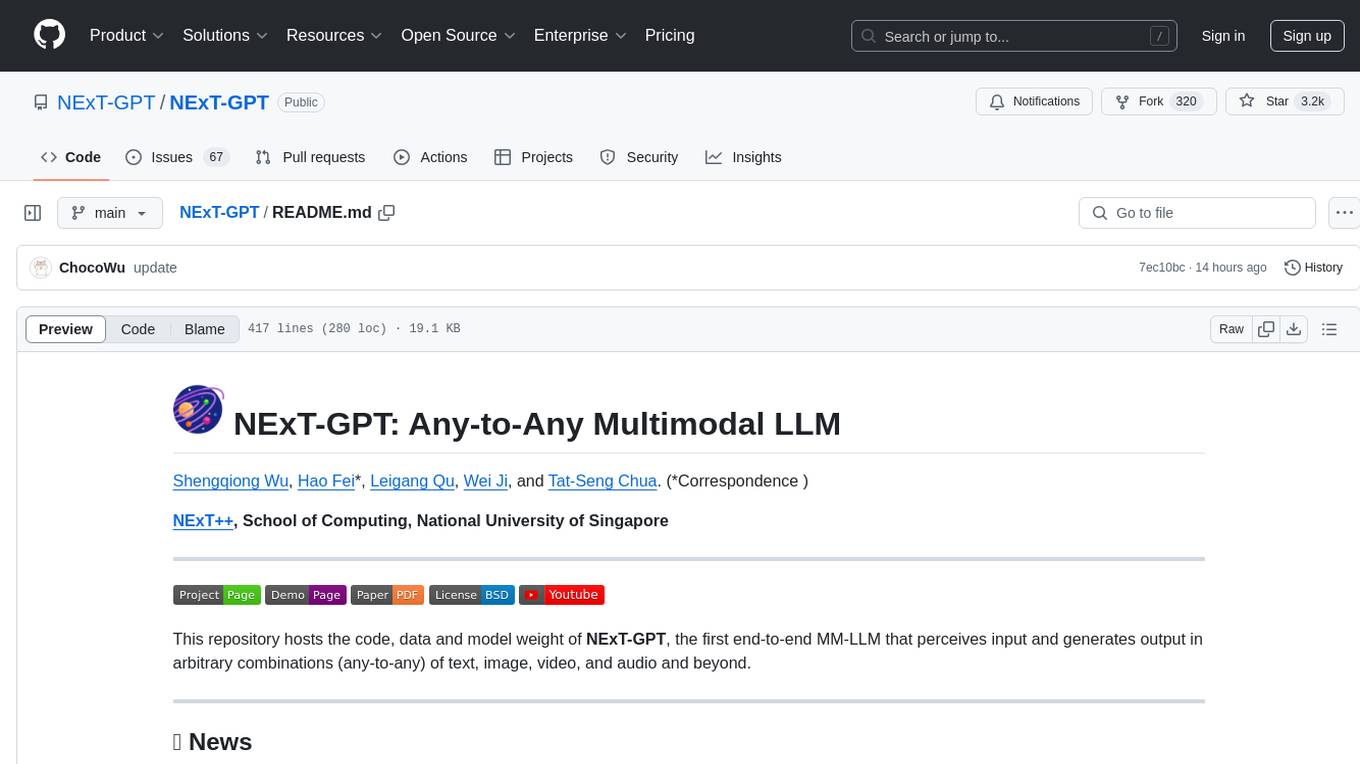
NExT-GPT
NExT-GPT is an end-to-end multimodal large language model that can process input and generate output in various combinations of text, image, video, and audio. It leverages existing pre-trained models and diffusion models with end-to-end instruction tuning. The repository contains code, data, and model weights for NExT-GPT, allowing users to work with different modalities and perform tasks like encoding, understanding, reasoning, and generating multimodal content.
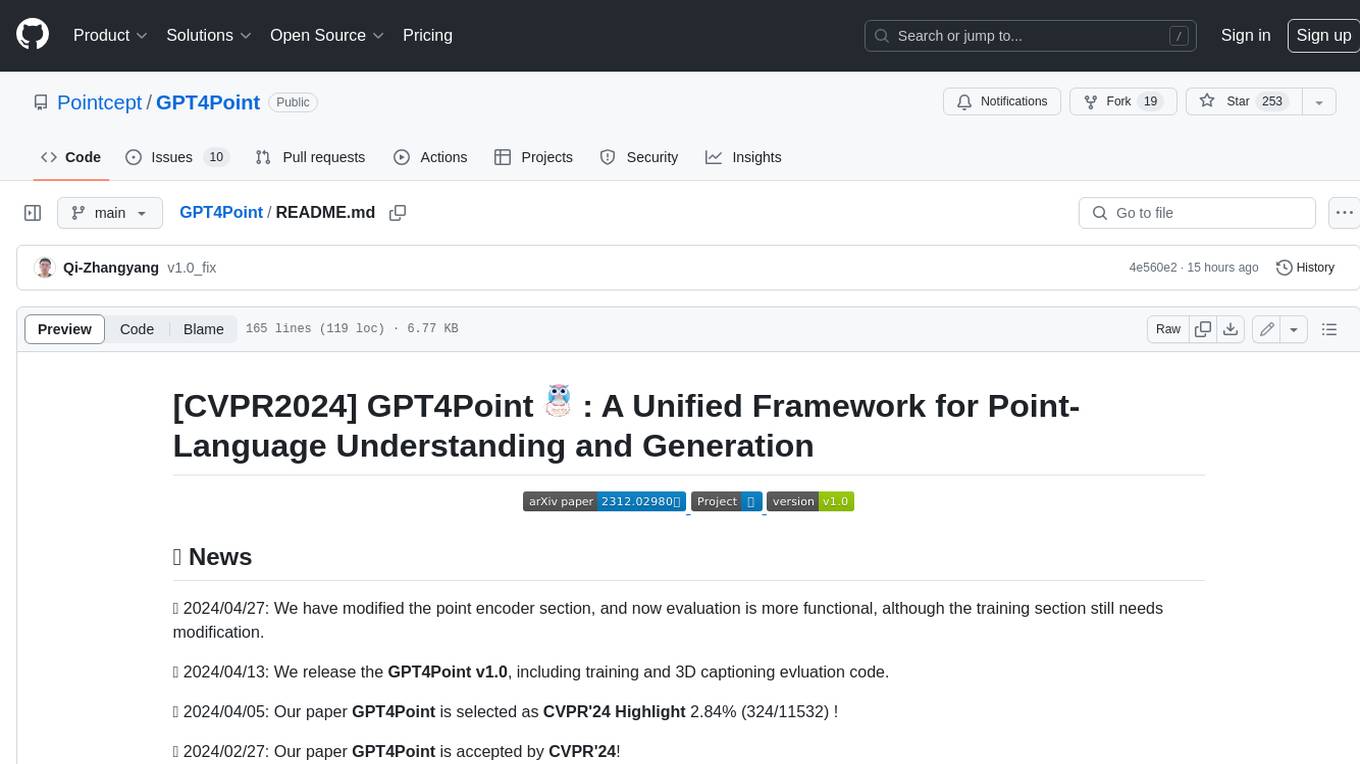
GPT4Point
GPT4Point is a unified framework for point-language understanding and generation. It aligns 3D point clouds with language, providing a comprehensive solution for tasks such as 3D captioning and controlled 3D generation. The project includes an automated point-language dataset annotation engine, a novel object-level point cloud benchmark, and a 3D multi-modality model. Users can train and evaluate models using the provided code and datasets, with a focus on improving models' understanding capabilities and facilitating the generation of 3D objects.
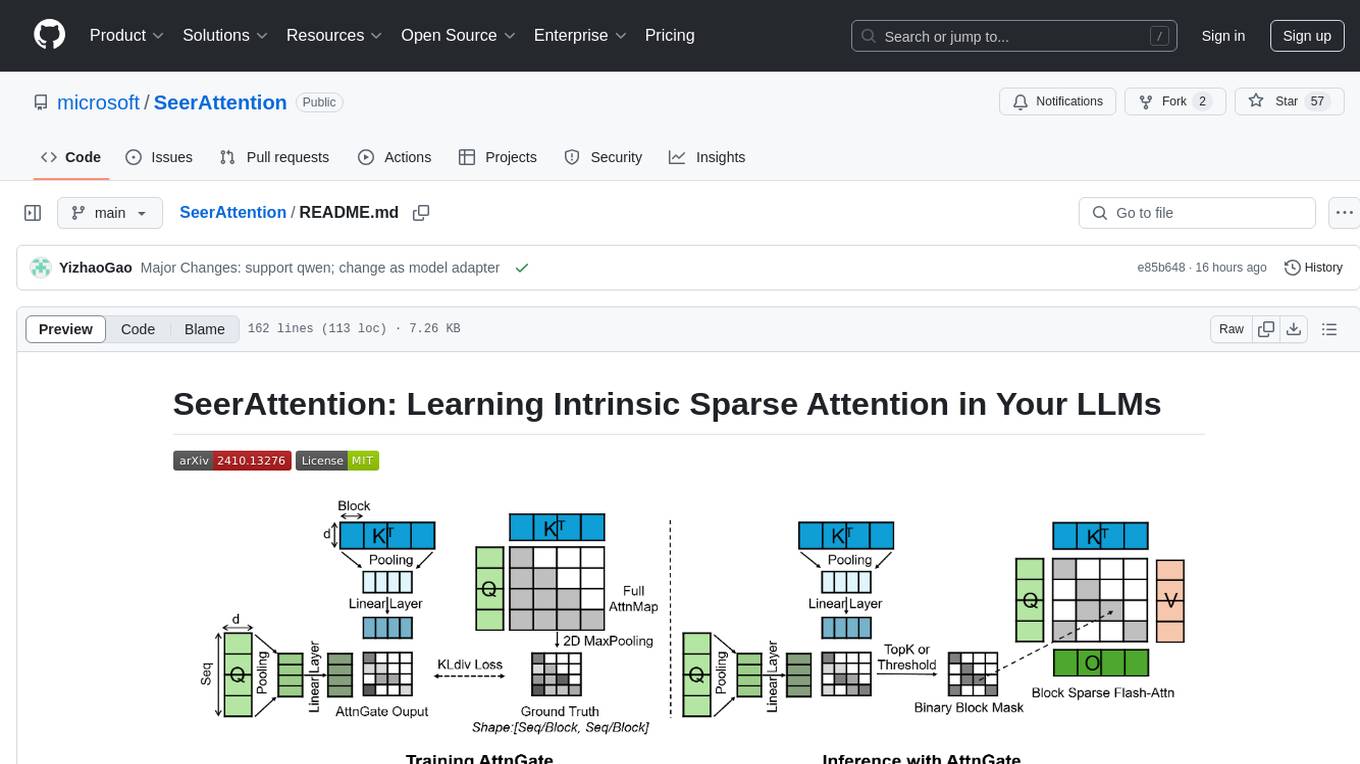
SeerAttention
SeerAttention is a novel trainable sparse attention mechanism that learns intrinsic sparsity patterns directly from LLMs through self-distillation at post-training time. It achieves faster inference while maintaining accuracy for long-context prefilling. The tool offers features such as trainable sparse attention, block-level sparsity, self-distillation, efficient kernel, and easy integration with existing transformer architectures. Users can quickly start using SeerAttention for inference with AttnGate Adapter and training attention gates with self-distillation. The tool provides efficient evaluation methods and encourages contributions from the community.
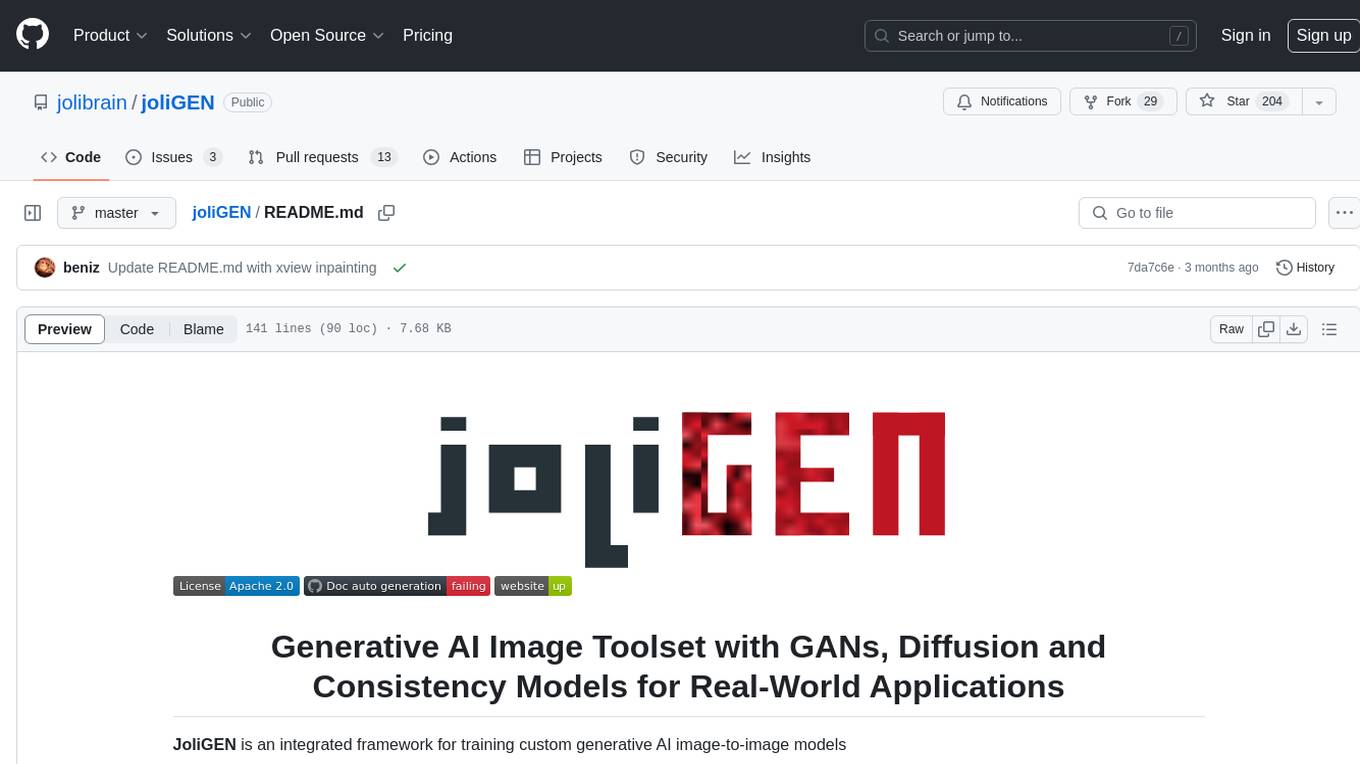
joliGEN
JoliGEN is an integrated framework for training custom generative AI image-to-image models. It implements GAN, Diffusion, and Consistency models for various image translation tasks, including domain and style adaptation with conservation of semantics. The tool is designed for real-world applications such as Controlled Image Generation, Augmented Reality, Dataset Smart Augmentation, and Synthetic to Real transforms. JoliGEN allows for fast and stable training with a REST API server for simplified deployment. It offers a wide range of options and parameters with detailed documentation available for models, dataset formats, and data augmentation.
BizyAir
BizyAir is a collection of ComfyUI nodes that help users overcome environmental and hardware limitations to generate high-quality content. It includes features such as ControlNet preprocessing, image background removal, photo-quality image generation, and animation super-resolution. Users can run ComfyUI anywhere without worrying about hardware requirements. Installation methods include using ComfyUI Manager, Comfy CLI, downloading standalone packages for Windows, or cloning the BizyAir repository into the custom_nodes subdirectory of ComfyUI.
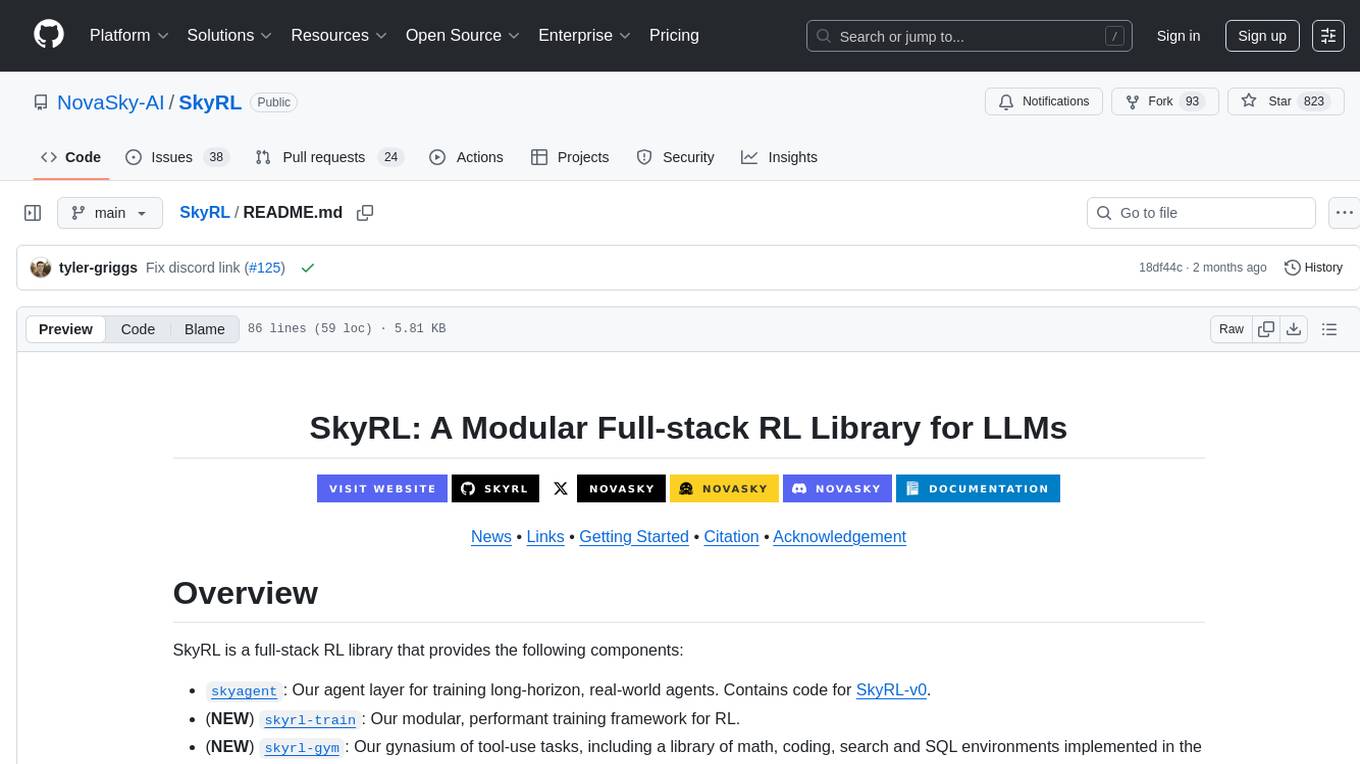
SkyRL
SkyRL is a full-stack RL library that provides components such as 'skyagent' for training long-horizon, real-world agents, 'skyrl-train' for modular RL training, and 'skyrl-gym' for a variety of tool-use tasks. It offers a library of math, coding, search, and SQL environments implemented in the Gymnasium API, optimized for multi-turn tool use LLMs on long-horizon, real-environment tasks.

DocsGPT
DocsGPT is an open-source documentation assistant powered by GPT models. It simplifies the process of searching for information in project documentation by allowing developers to ask questions and receive accurate answers. With DocsGPT, users can say goodbye to manual searches and quickly find the information they need. The tool aims to revolutionize project documentation experiences and offers features like live previews, Discord community, guides, and contribution opportunities. It consists of a Flask app, Chrome extension, similarity search index creation script, and a frontend built with Vite and React. Users can quickly get started with DocsGPT by following the provided setup instructions and can contribute to its development by following the guidelines in the CONTRIBUTING.md file. The project follows a Code of Conduct to ensure a harassment-free community environment for all participants. DocsGPT is licensed under MIT and is built with LangChain.
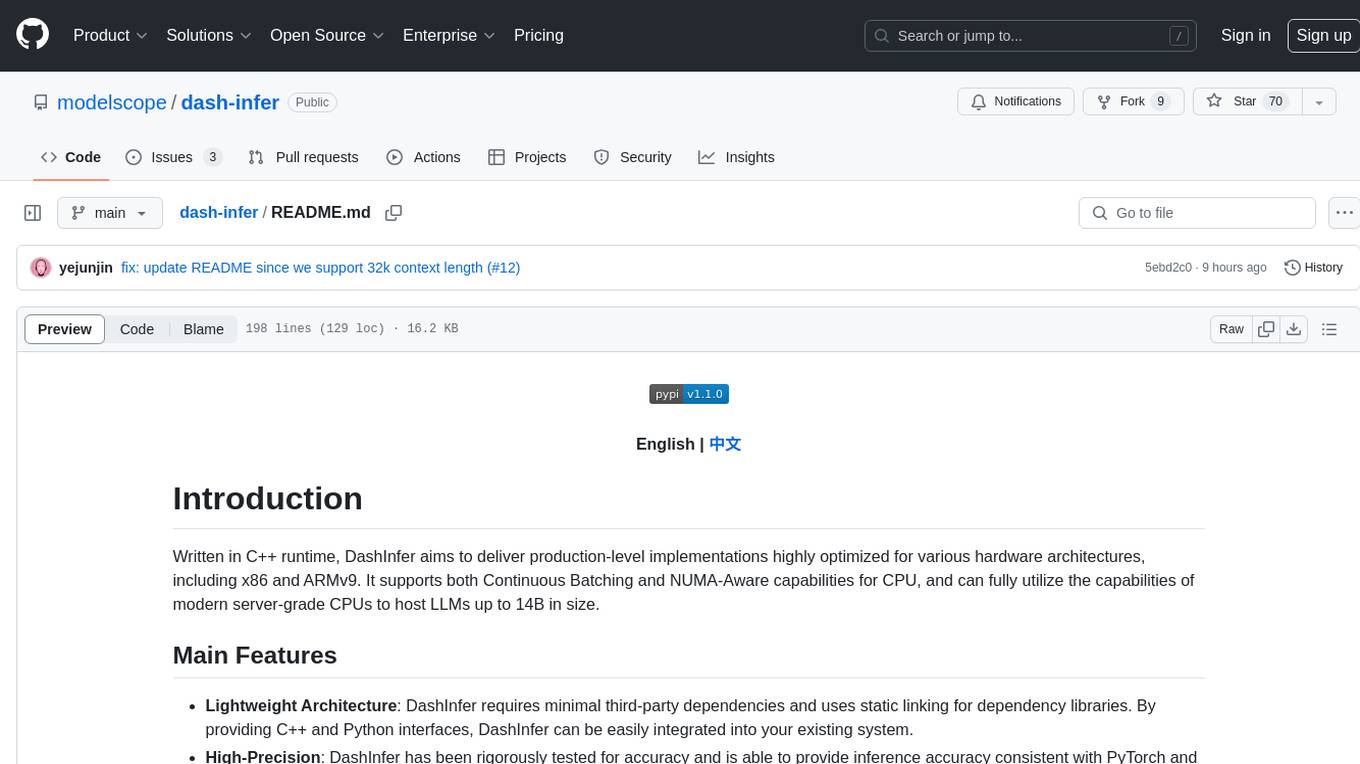
dash-infer
DashInfer is a C++ runtime tool designed to deliver production-level implementations highly optimized for various hardware architectures, including x86 and ARMv9. It supports Continuous Batching and NUMA-Aware capabilities for CPU, and can fully utilize modern server-grade CPUs to host large language models (LLMs) up to 14B in size. With lightweight architecture, high precision, support for mainstream open-source LLMs, post-training quantization, optimized computation kernels, NUMA-aware design, and multi-language API interfaces, DashInfer provides a versatile solution for efficient inference tasks. It supports x86 CPUs with AVX2 instruction set and ARMv9 CPUs with SVE instruction set, along with various data types like FP32, BF16, and InstantQuant. DashInfer also offers single-NUMA and multi-NUMA architectures for model inference, with detailed performance tests and inference accuracy evaluations available. The tool is supported on mainstream Linux server operating systems and provides documentation and examples for easy integration and usage.
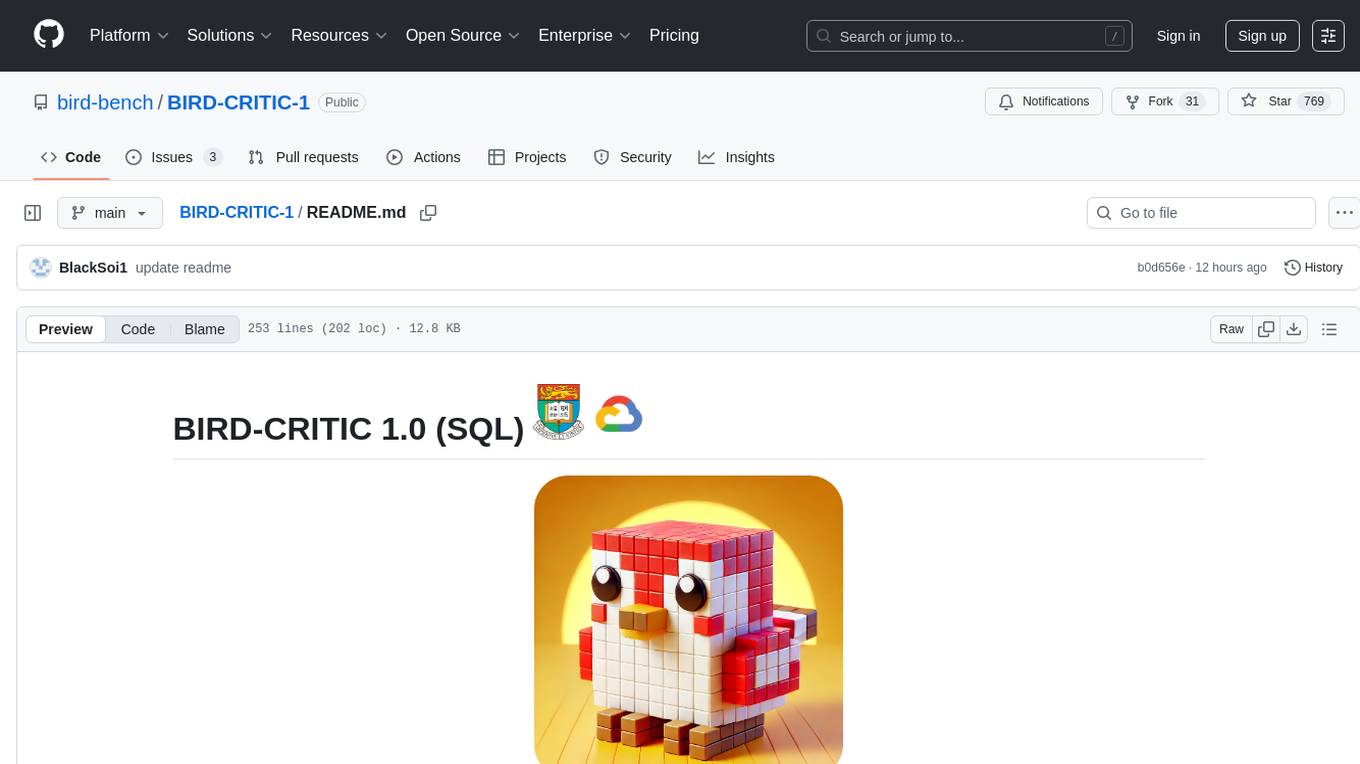
BIRD-CRITIC-1
BIRD-CRITIC 1.0 is a SQL benchmark designed to evaluate the capability of large language models (LLMs) in diagnosing and solving user issues within real-world database environments. It comprises 600 tasks for development and 200 held-out out-of-distribution tests across 4 prominent open-source SQL dialects. The benchmark expands beyond simple SELECT queries to cover a wider range of SQL operations, reflecting actual application scenarios. An optimized execution-based evaluation environment is included for rigorous and efficient validation.
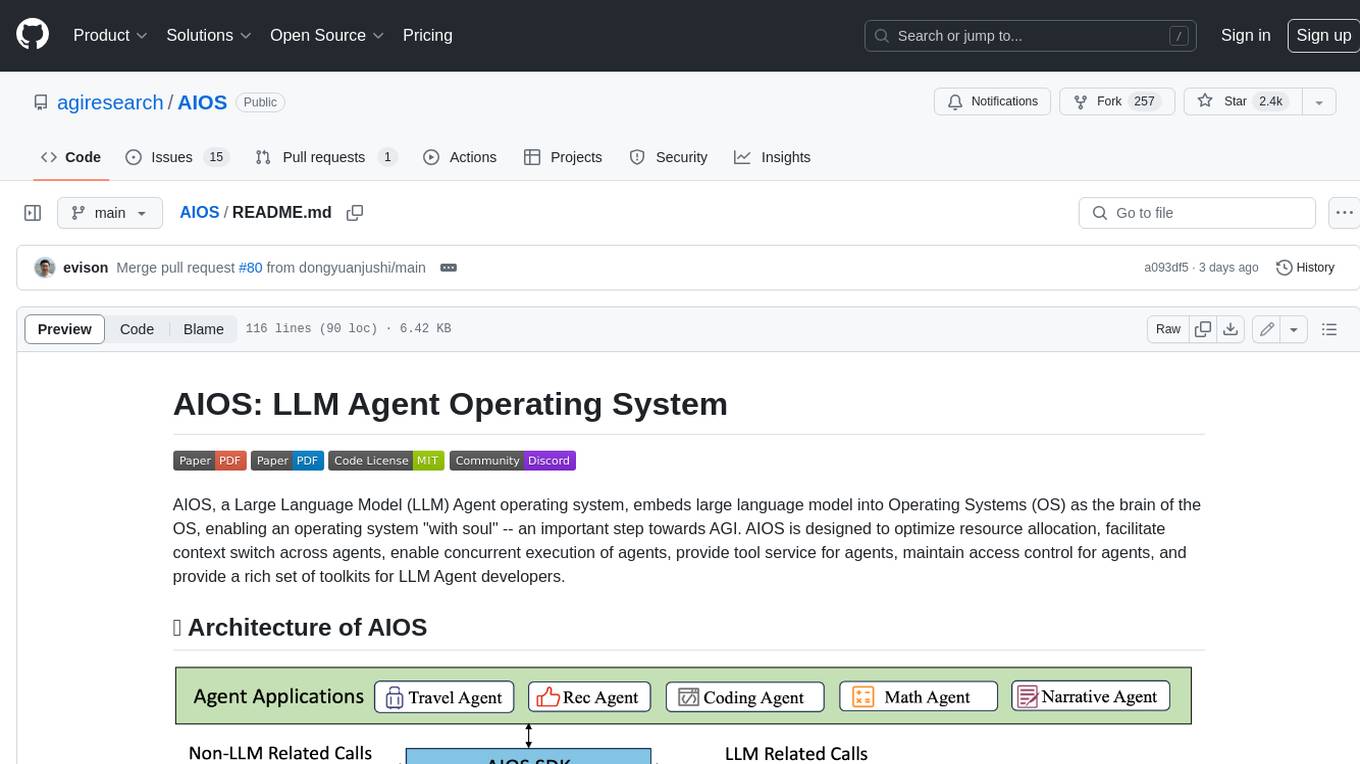
AIOS
AIOS, a Large Language Model (LLM) Agent operating system, embeds large language model into Operating Systems (OS) as the brain of the OS, enabling an operating system "with soul" -- an important step towards AGI. AIOS is designed to optimize resource allocation, facilitate context switch across agents, enable concurrent execution of agents, provide tool service for agents, maintain access control for agents, and provide a rich set of toolkits for LLM Agent developers.
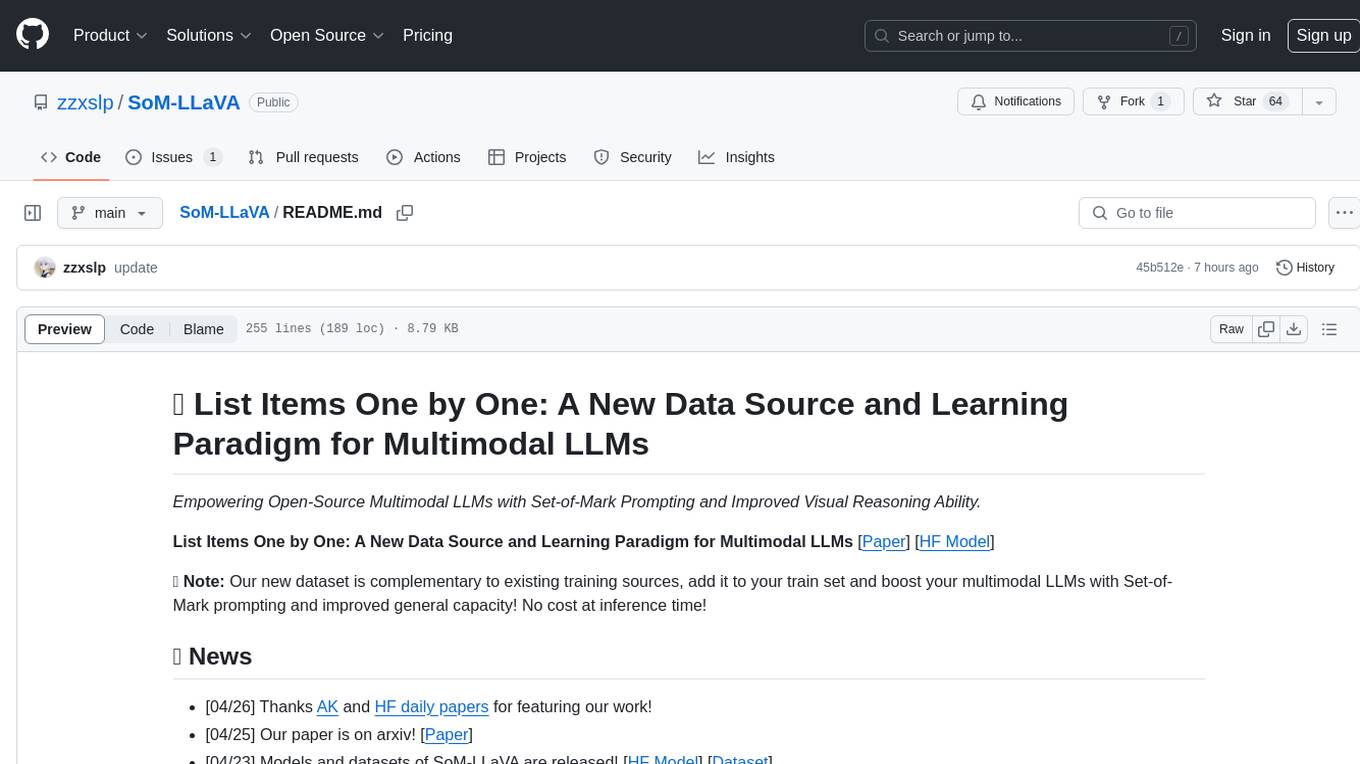
SoM-LLaVA
SoM-LLaVA is a new data source and learning paradigm for Multimodal LLMs, empowering open-source Multimodal LLMs with Set-of-Mark prompting and improved visual reasoning ability. The repository provides a new dataset that is complementary to existing training sources, enhancing multimodal LLMs with Set-of-Mark prompting and improved general capacity. By adding 30k SoM data to the visual instruction tuning stage of LLaVA, the tool achieves 1% to 6% relative improvements on all benchmarks. Users can train SoM-LLaVA via command line and utilize the implementation to annotate COCO images with SoM. Additionally, the tool can be loaded in Huggingface for further usage.
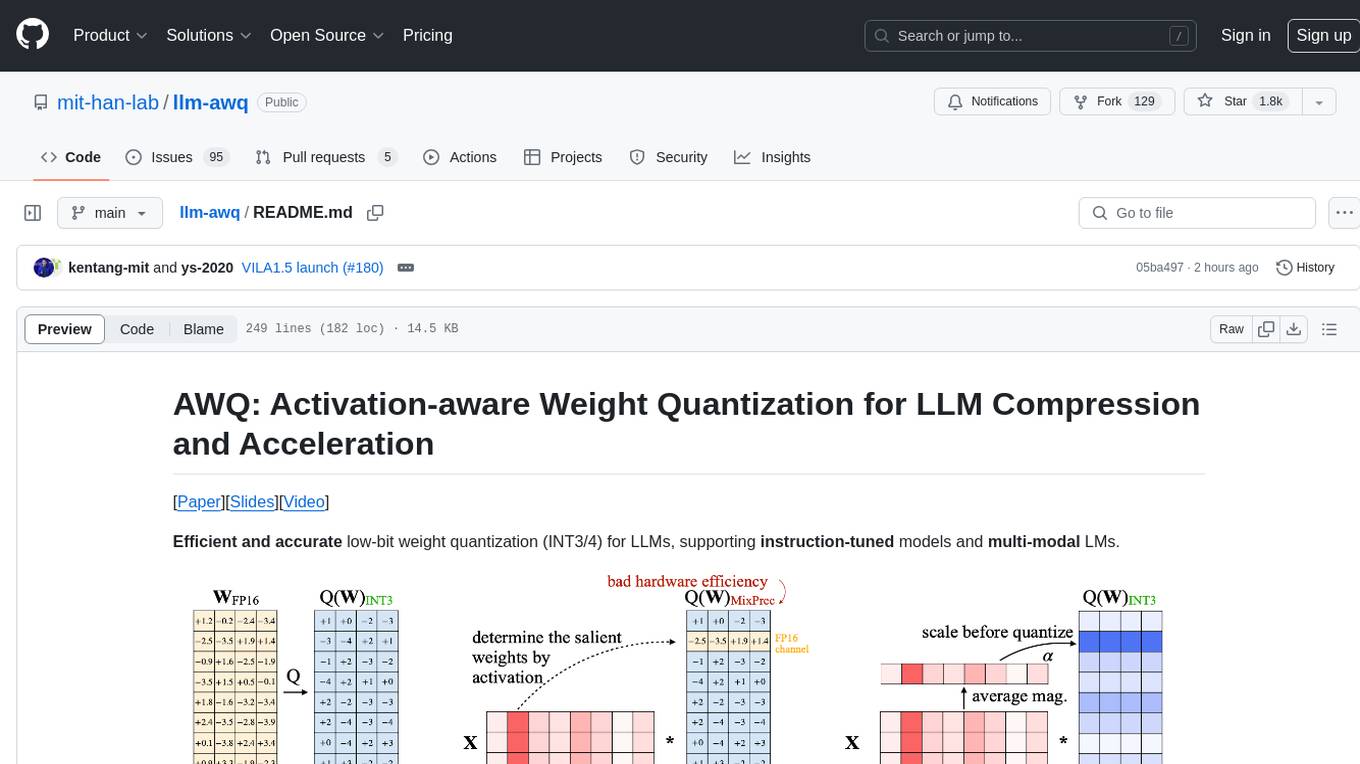
llm-awq
AWQ (Activation-aware Weight Quantization) is a tool designed for efficient and accurate low-bit weight quantization (INT3/4) for Large Language Models (LLMs). It supports instruction-tuned models and multi-modal LMs, providing features such as AWQ search for accurate quantization, pre-computed AWQ model zoo for various LLMs, memory-efficient 4-bit linear in PyTorch, and efficient CUDA kernel implementation for fast inference. The tool enables users to run large models on resource-constrained edge platforms, delivering more efficient responses with LLM/VLM chatbots through 4-bit inference.
For similar tasks
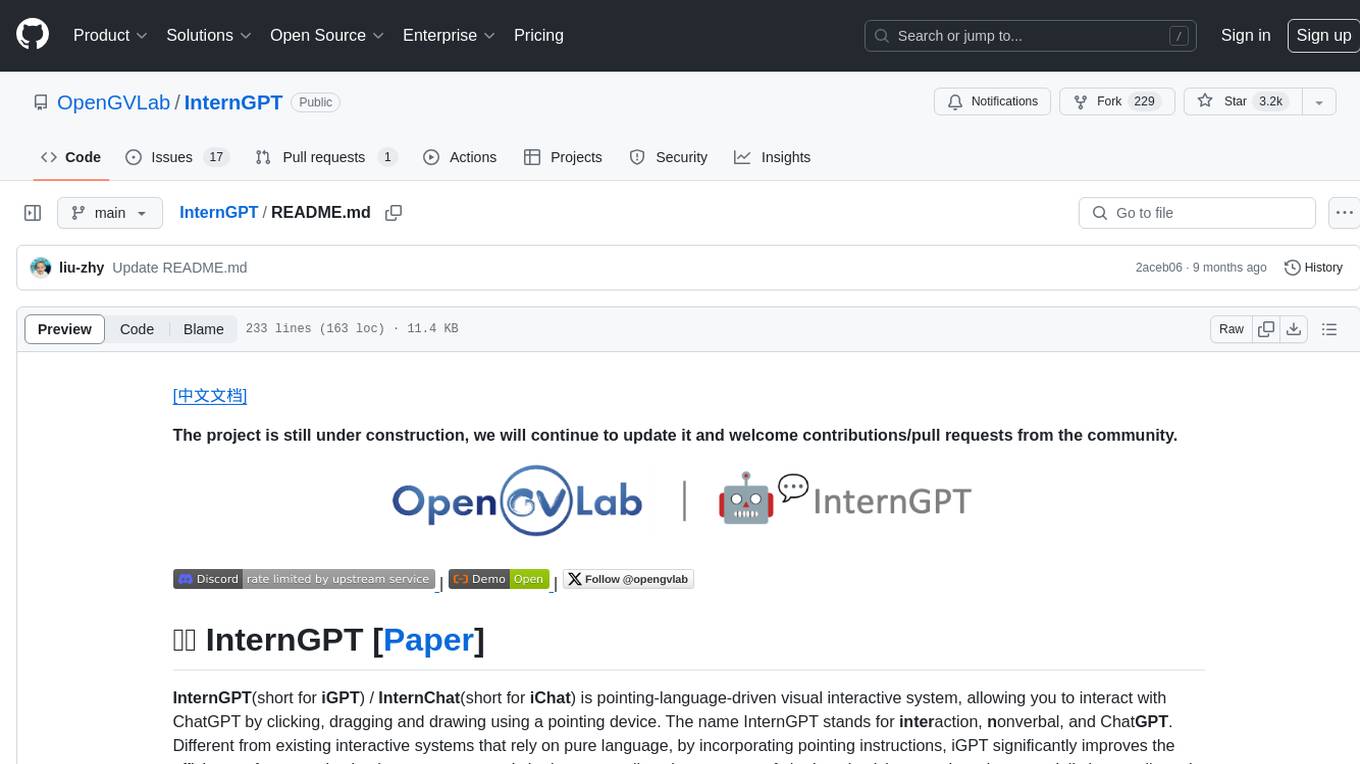
InternGPT
InternGPT (iGPT) is a pointing-language-driven visual interactive system that enhances communication between users and chatbots by incorporating pointing instructions. It improves chatbot accuracy in vision-centric tasks, especially in complex visual scenarios. The system includes an auxiliary control mechanism to enhance the control capability of the language model. InternGPT features a large vision-language model called Husky, fine-tuned for high-quality multi-modal dialogue. Users can interact with ChatGPT by clicking, dragging, and drawing using a pointing device, leading to efficient communication and improved chatbot performance in vision-related tasks.

LLMGA
LLMGA (Multimodal Large Language Model-based Generation Assistant) is a tool that leverages Large Language Models (LLMs) to assist users in image generation and editing. It provides detailed language generation prompts for precise control over Stable Diffusion (SD), resulting in more intricate and precise content in generated images. The tool curates a dataset for prompt refinement, similar image generation, inpainting & outpainting, and visual question answering. It offers a two-stage training scheme to optimize SD alignment and a reference-based restoration network to alleviate texture, brightness, and contrast disparities in image editing. LLMGA shows promising generative capabilities and enables wider applications in an interactive manner.
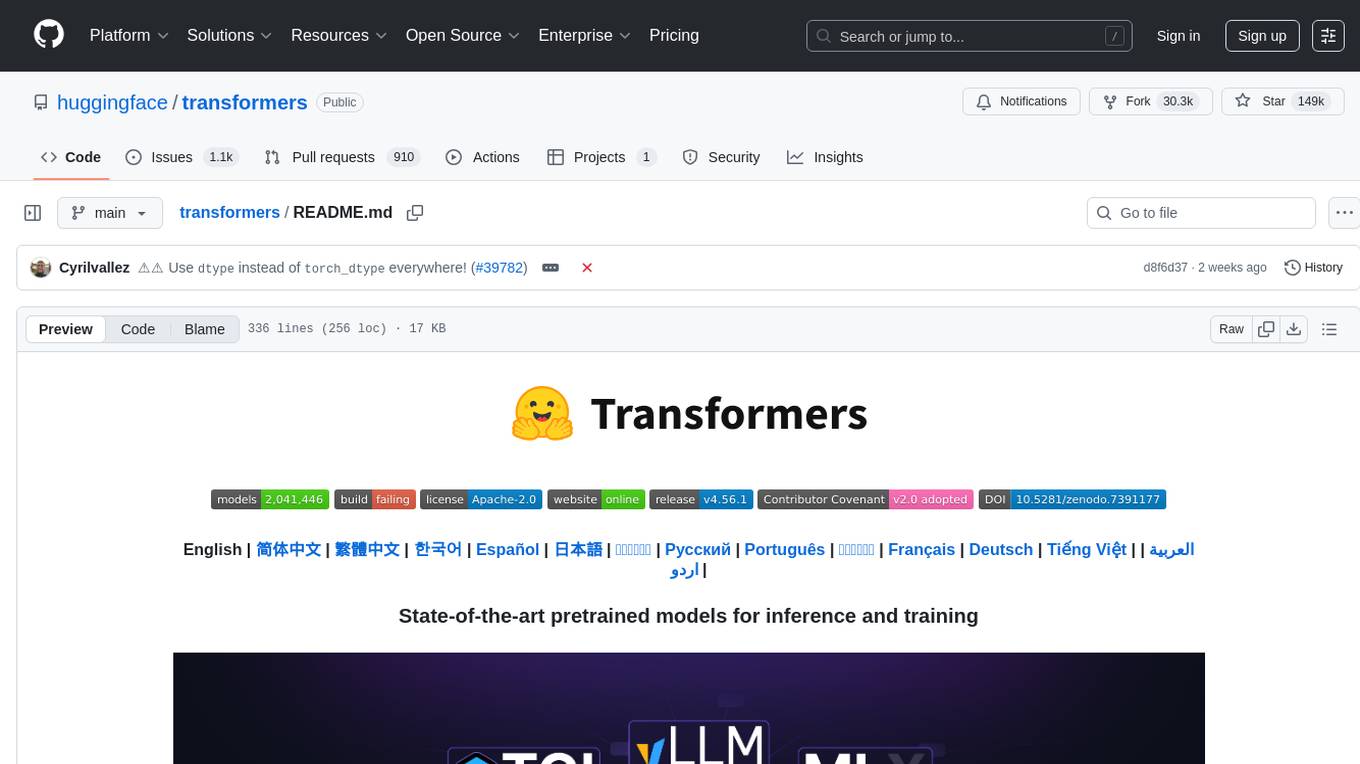
transformers
Transformers is a state-of-the-art pretrained models library that acts as the model-definition framework for machine learning models in text, computer vision, audio, video, and multimodal tasks. It centralizes model definition for compatibility across various training frameworks, inference engines, and modeling libraries. The library simplifies the usage of new models by providing simple, customizable, and efficient model definitions. With over 1M+ Transformers model checkpoints available, users can easily find and utilize models for their tasks.
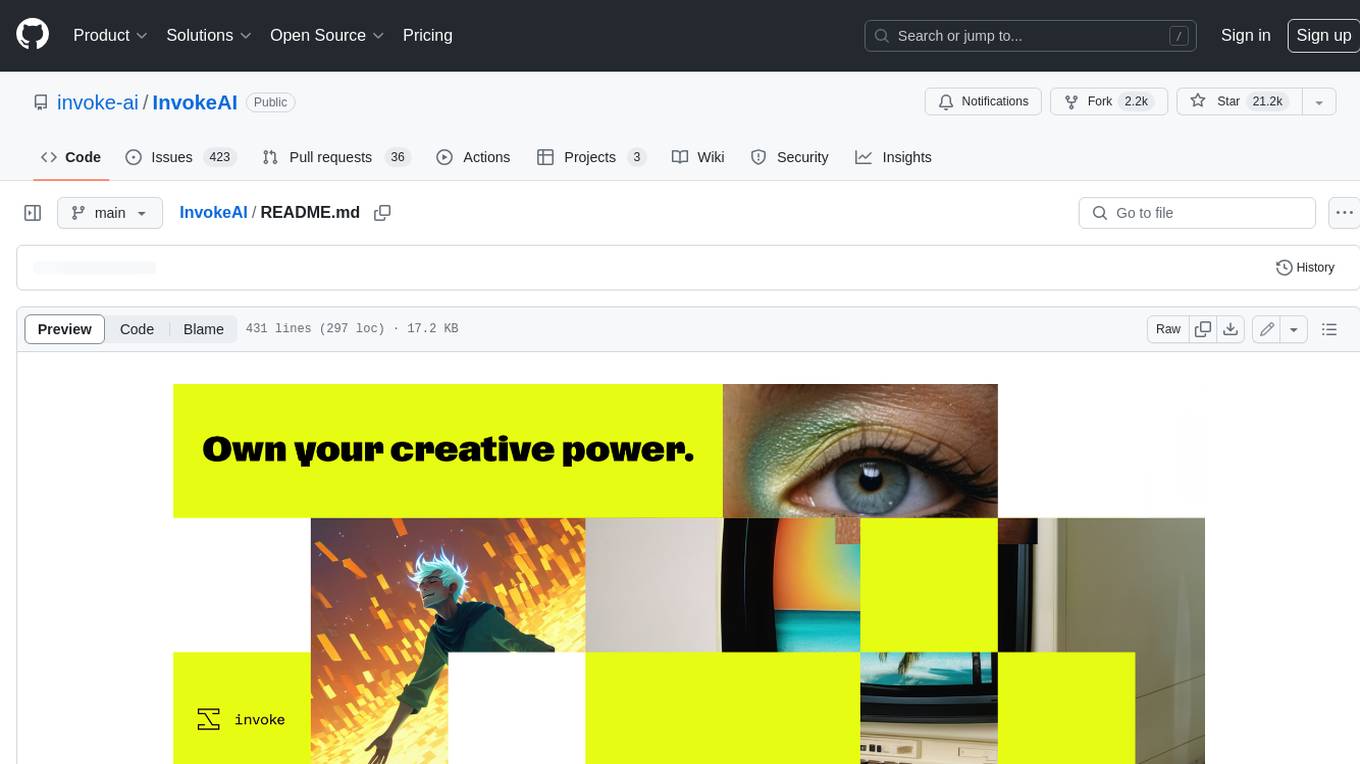
InvokeAI
InvokeAI is a leading creative engine built to empower professionals and enthusiasts alike. Generate and create stunning visual media using the latest AI-driven technologies. InvokeAI offers an industry leading Web Interface, interactive Command Line Interface, and also serves as the foundation for multiple commercial products.
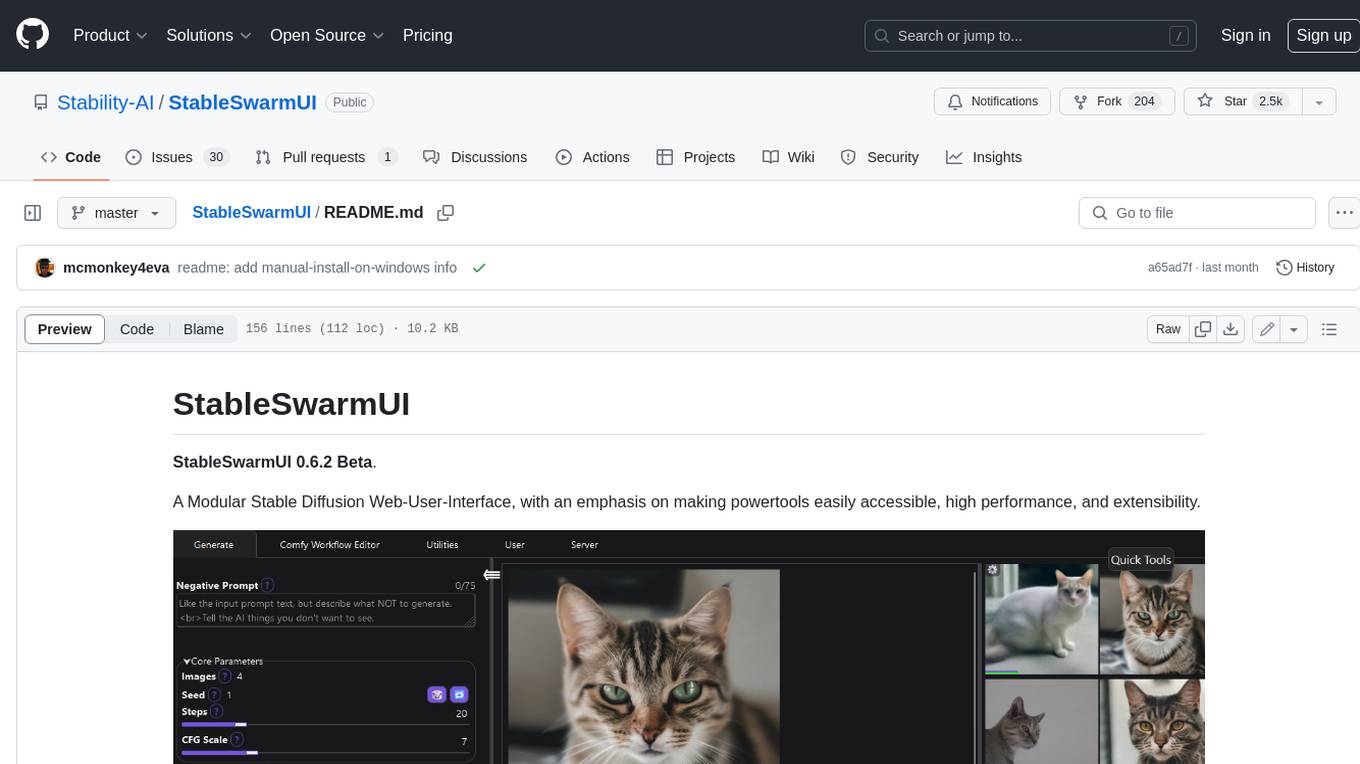
StableSwarmUI
StableSwarmUI is a modular Stable Diffusion web user interface that emphasizes making power tools easily accessible, high performance, and extensible. It is designed to be a one-stop-shop for all things Stable Diffusion, providing a wide range of features and capabilities to enhance the user experience.
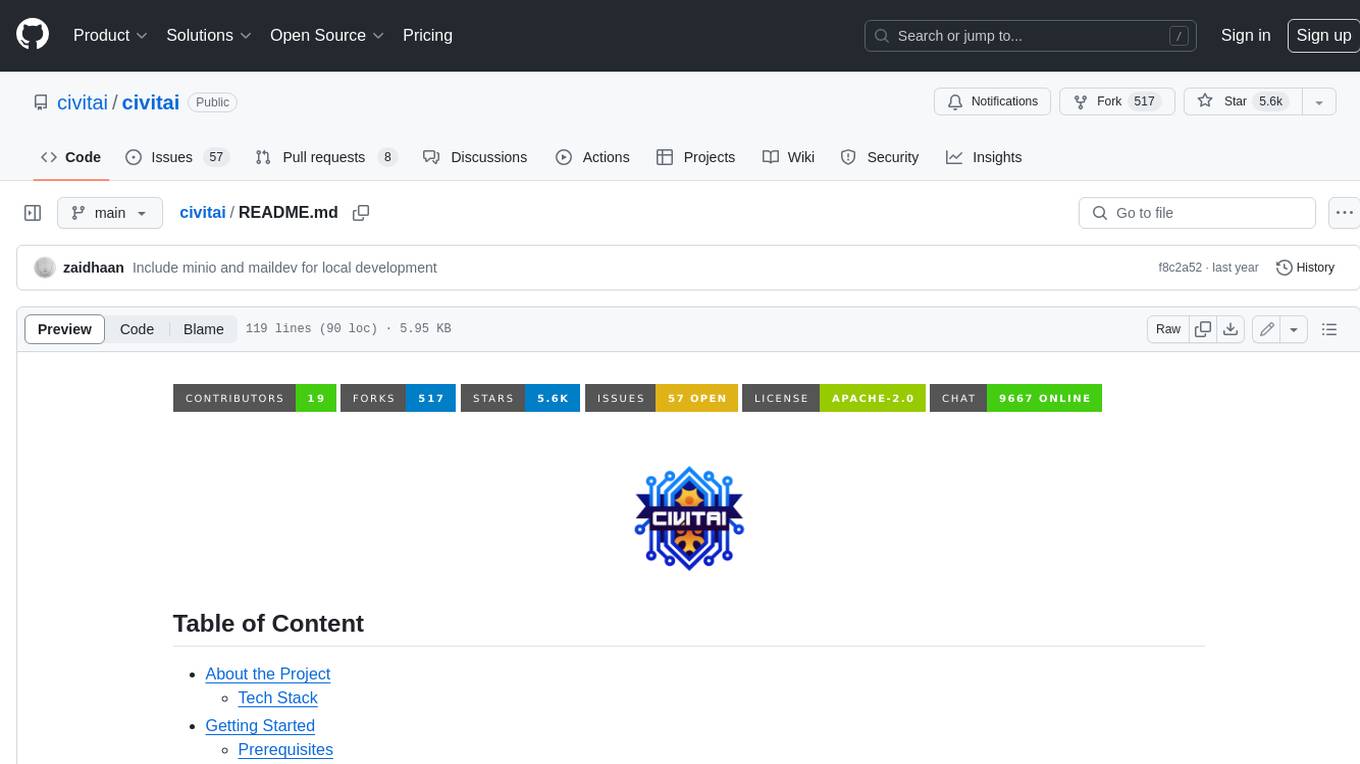
civitai
Civitai is a platform where people can share their stable diffusion models (textual inversions, hypernetworks, aesthetic gradients, VAEs, and any other crazy stuff people do to customize their AI generations), collaborate with others to improve them, and learn from each other's work. The platform allows users to create an account, upload their models, and browse models that have been shared by others. Users can also leave comments and feedback on each other's models to facilitate collaboration and knowledge sharing.
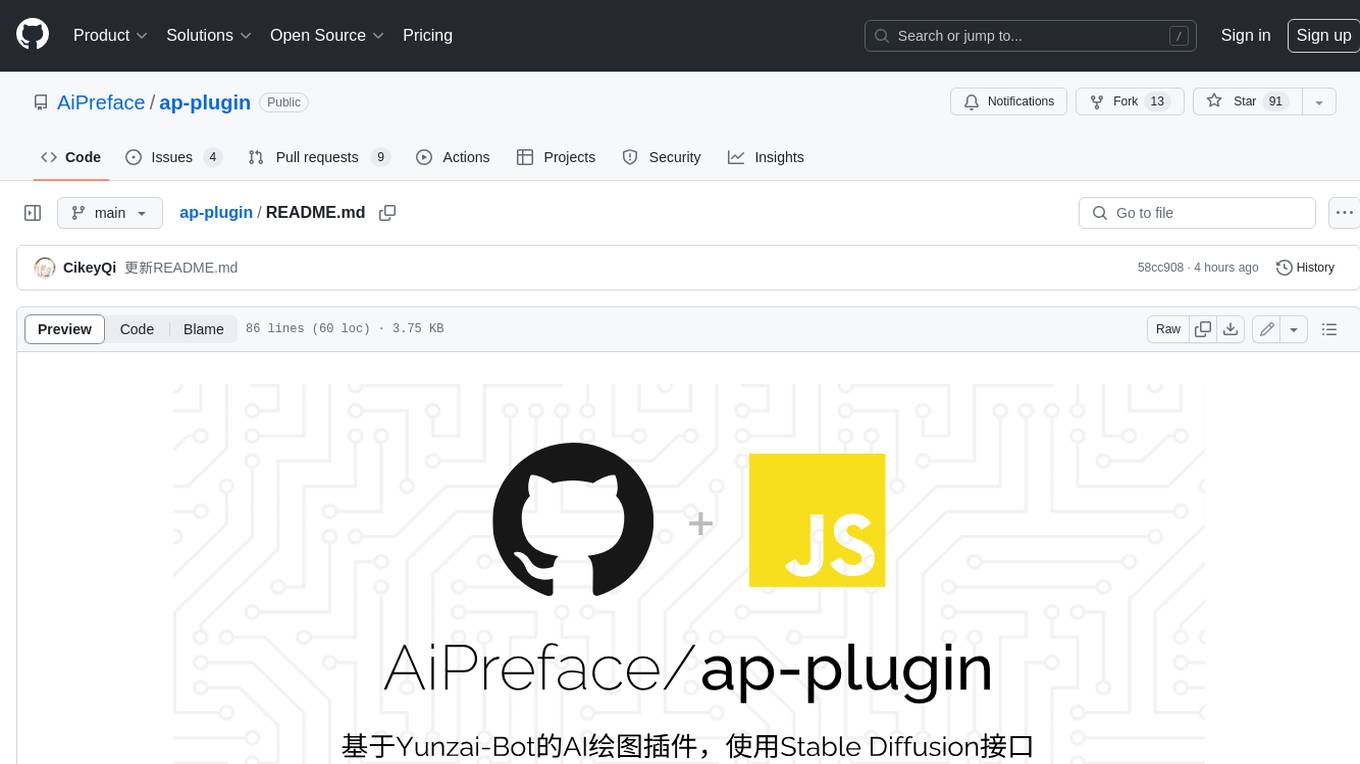
ap-plugin
AP-PLUGIN is an AI drawing plugin for the Yunzai series robot framework, allowing you to have a convenient AI drawing experience in the input box. It uses the open source Stable Diffusion web UI as the backend, deploys it for free, and generates a variety of images with richer functions.
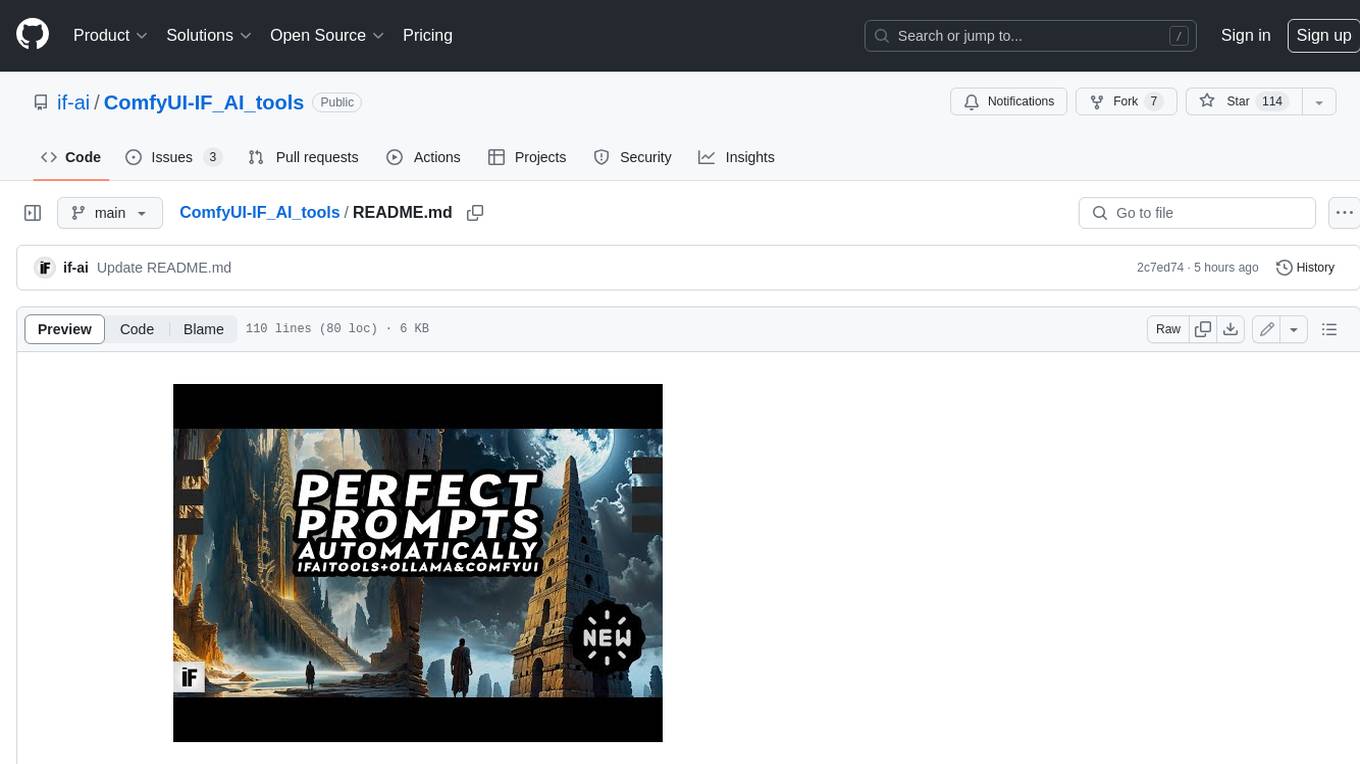
ComfyUI-IF_AI_tools
ComfyUI-IF_AI_tools is a set of custom nodes for ComfyUI that allows you to generate prompts using a local Large Language Model (LLM) via Ollama. This tool enables you to enhance your image generation workflow by leveraging the power of language models.
For similar jobs
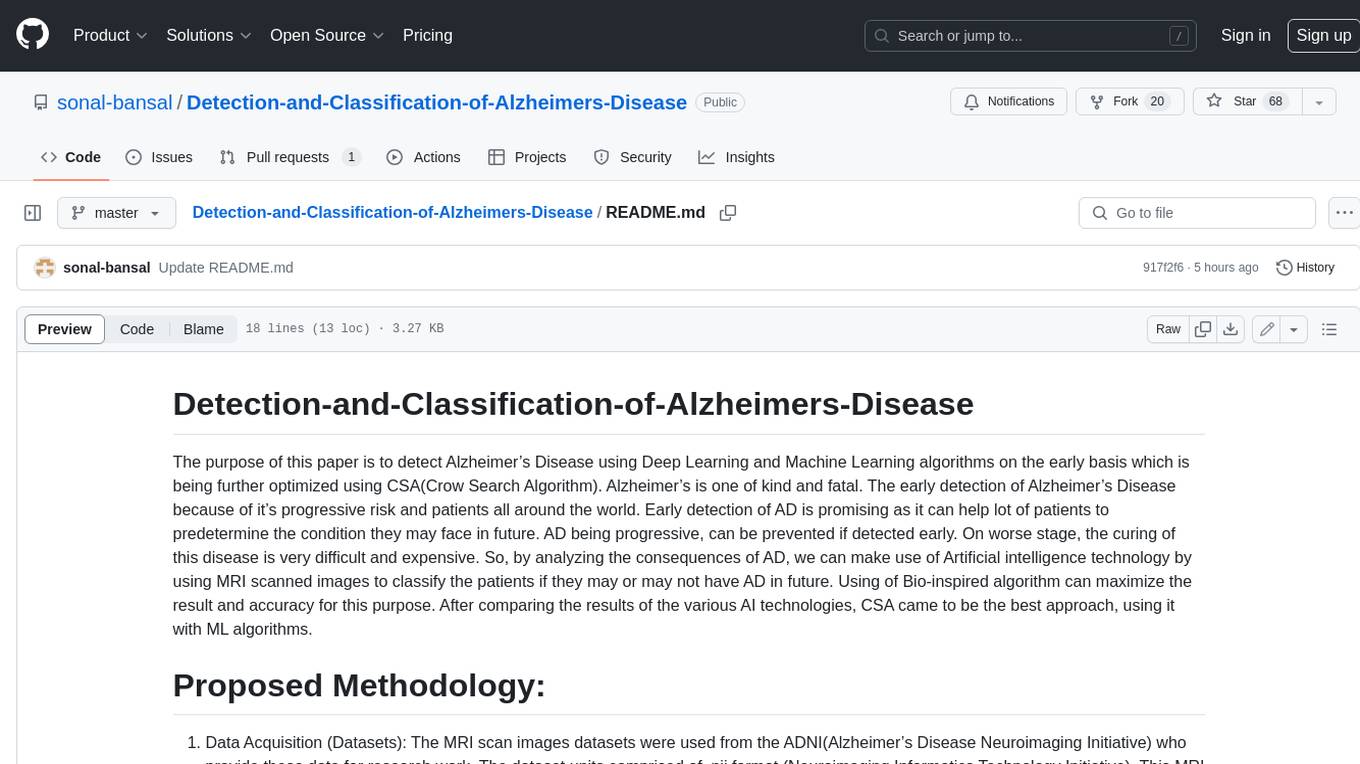
Detection-and-Classification-of-Alzheimers-Disease
This tool is designed to detect and classify Alzheimer's Disease using Deep Learning and Machine Learning algorithms on an early basis, which is further optimized using the Crow Search Algorithm (CSA). Alzheimer's is a fatal disease, and early detection is crucial for patients to predetermine their condition and prevent its progression. By analyzing MRI scanned images using Artificial Intelligence technology, this tool can classify patients who may or may not develop AD in the future. The CSA algorithm, combined with ML algorithms, has proven to be the most effective approach for this purpose.
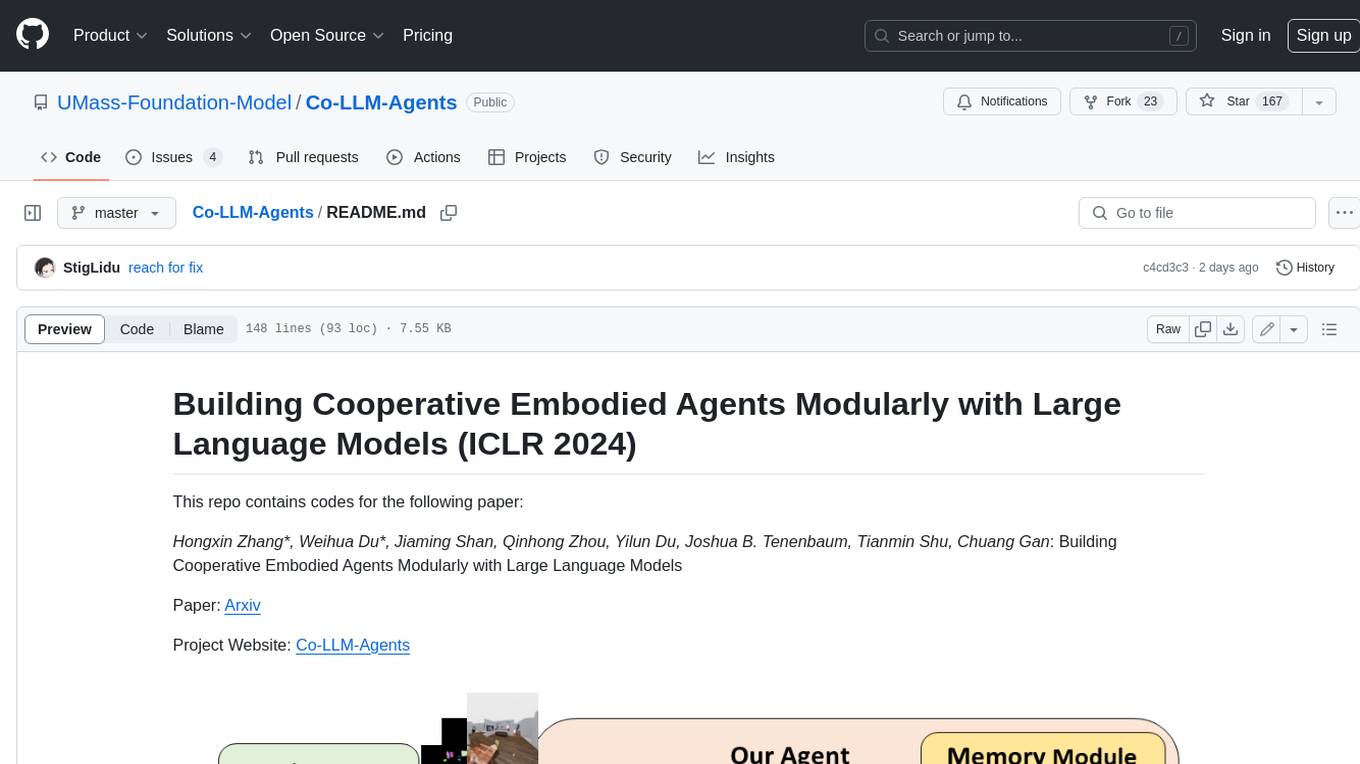
Co-LLM-Agents
This repository contains code for building cooperative embodied agents modularly with large language models. The agents are trained to perform tasks in two different environments: ThreeDWorld Multi-Agent Transport (TDW-MAT) and Communicative Watch-And-Help (C-WAH). TDW-MAT is a multi-agent environment where agents must transport objects to a goal position using containers. C-WAH is an extension of the Watch-And-Help challenge, which enables agents to send messages to each other. The code in this repository can be used to train agents to perform tasks in both of these environments.
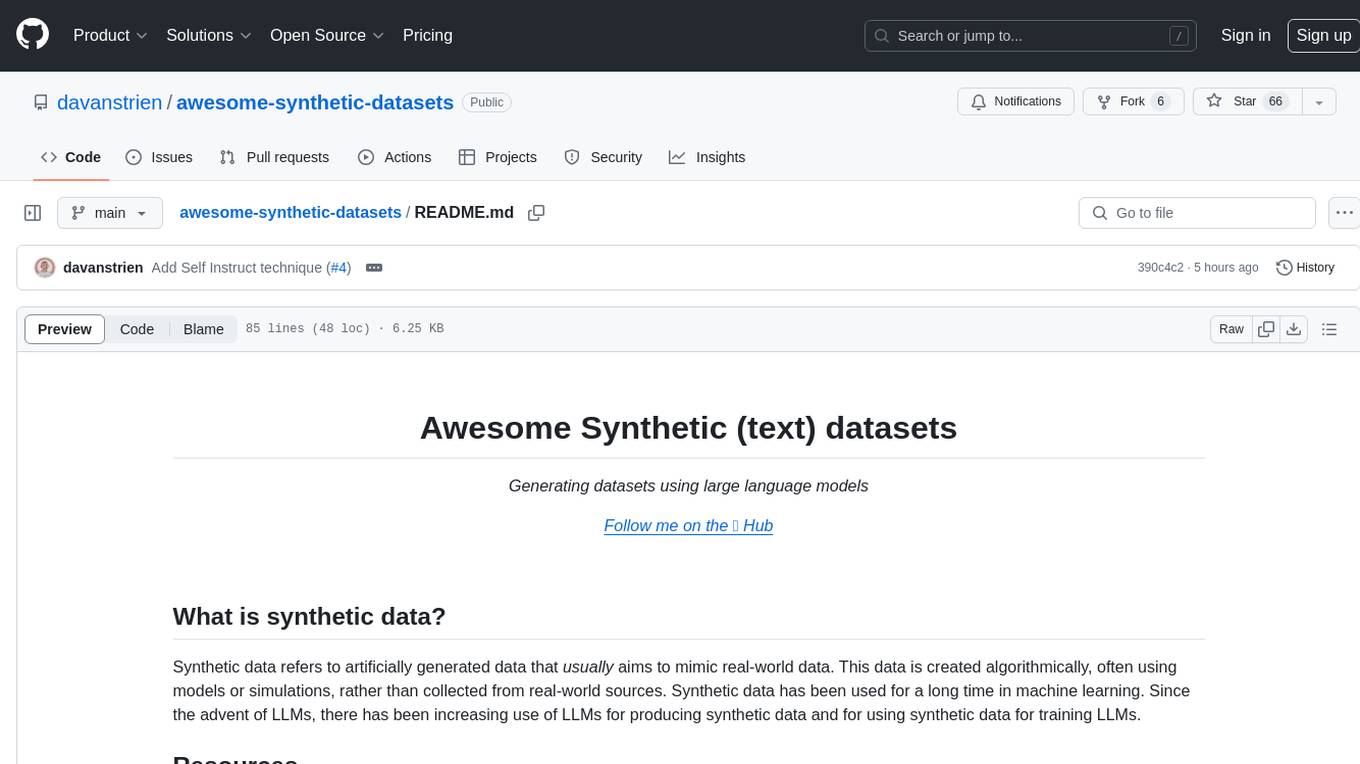
awesome-synthetic-datasets
This repository focuses on organizing resources for building synthetic datasets using large language models. It covers important datasets, libraries, tools, tutorials, and papers related to synthetic data generation. The goal is to provide pragmatic and practical resources for individuals interested in creating synthetic datasets for machine learning applications.
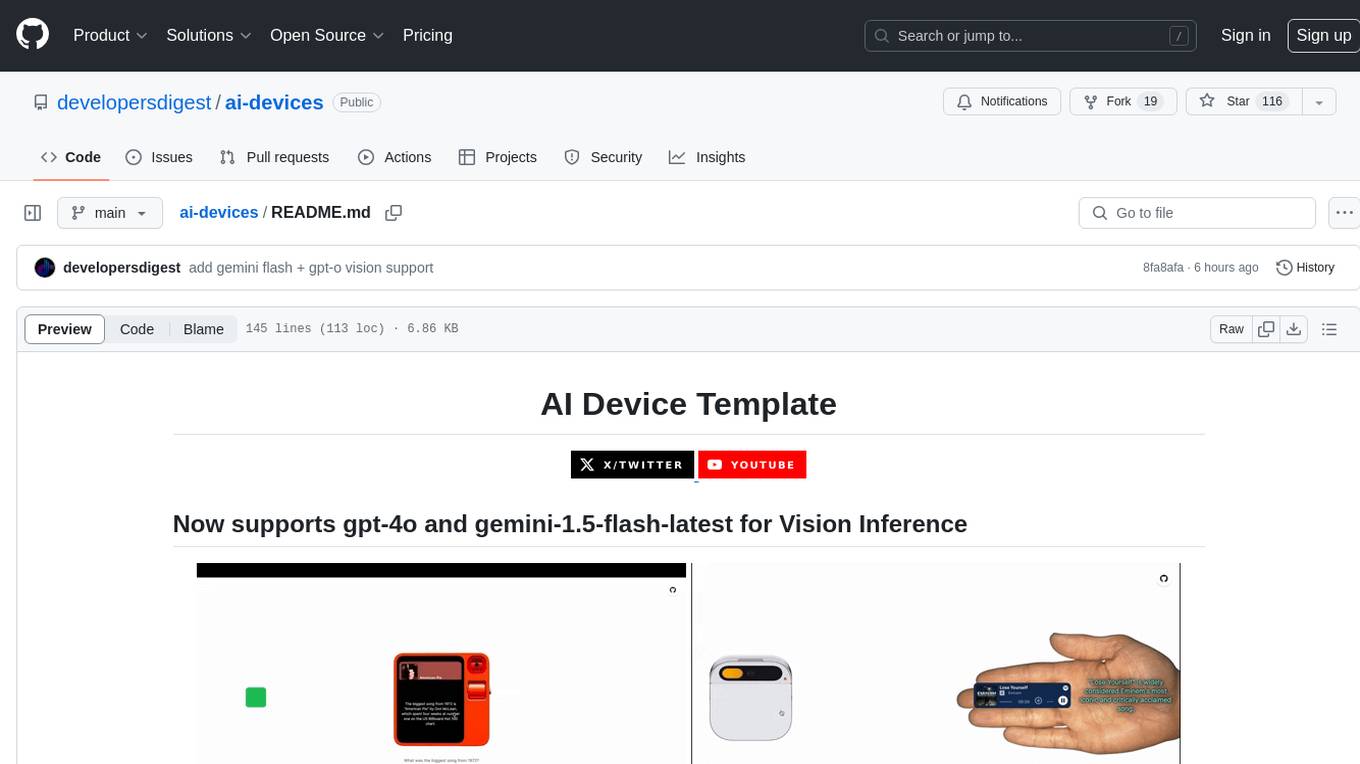
ai-devices
AI Devices Template is a project that serves as an AI-powered voice assistant utilizing various AI models and services to provide intelligent responses to user queries. It supports voice input, transcription, text-to-speech, image processing, and function calling with conditionally rendered UI components. The project includes customizable UI settings, optional rate limiting using Upstash, and optional tracing with Langchain's LangSmith for function execution. Users can clone the repository, install dependencies, add API keys, start the development server, and deploy the application. Configuration settings can be modified in `app/config.tsx` to adjust settings and configurations for the AI-powered voice assistant.
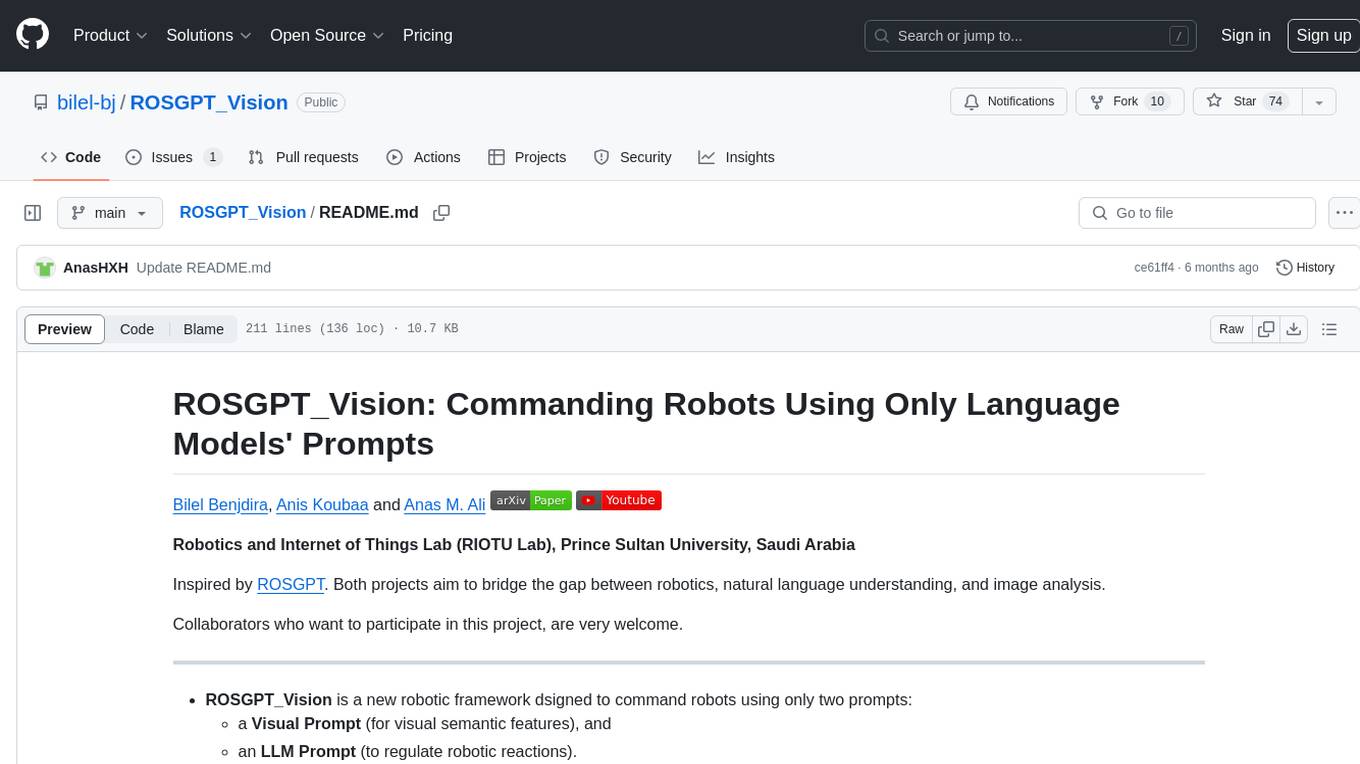
ROSGPT_Vision
ROSGPT_Vision is a new robotic framework designed to command robots using only two prompts: a Visual Prompt for visual semantic features and an LLM Prompt to regulate robotic reactions. It is based on the Prompting Robotic Modalities (PRM) design pattern and is used to develop CarMate, a robotic application for monitoring driver distractions and providing real-time vocal notifications. The framework leverages state-of-the-art language models to facilitate advanced reasoning about image data and offers a unified platform for robots to perceive, interpret, and interact with visual data through natural language. LangChain is used for easy customization of prompts, and the implementation includes the CarMate application for driver monitoring and assistance.
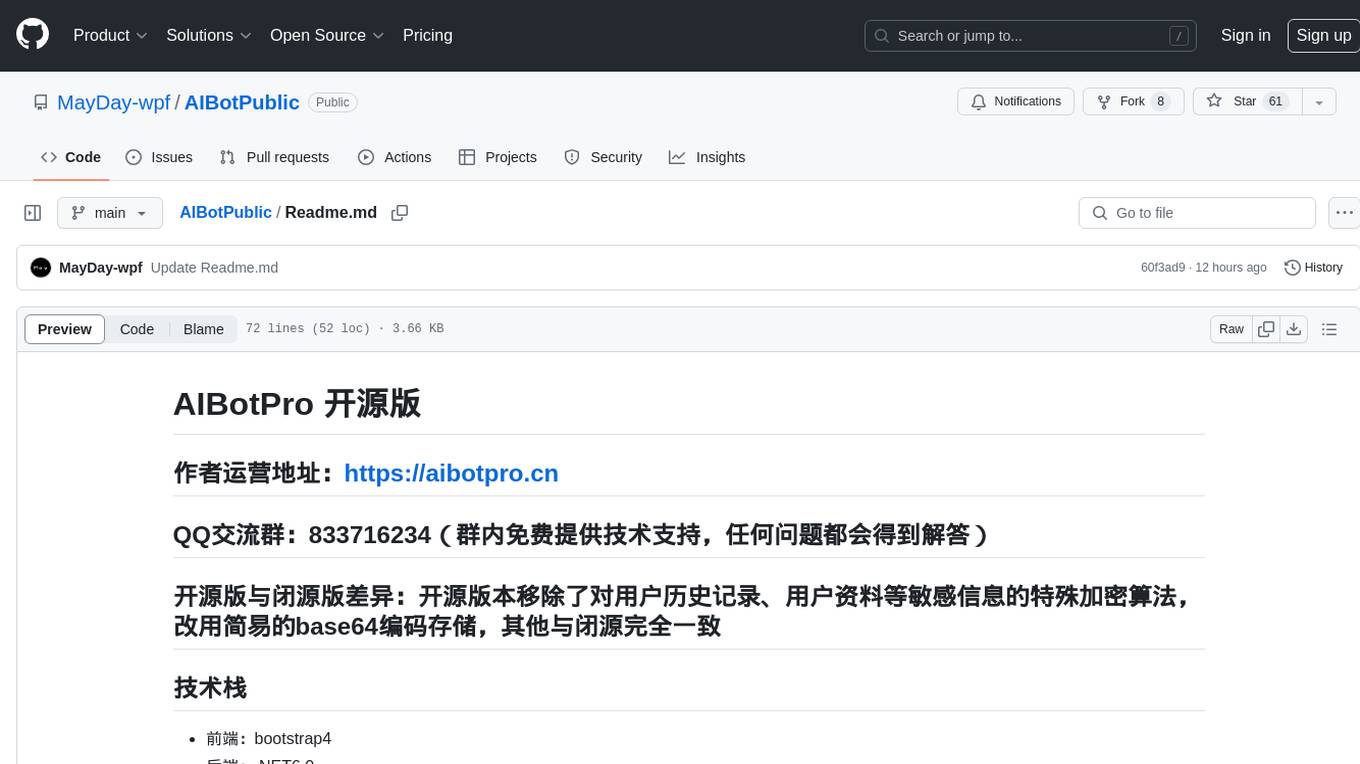
AIBotPublic
AIBotPublic is an open-source version of AIBotPro, a comprehensive AI tool that provides various features such as knowledge base construction, AI drawing, API hosting, and more. It supports custom plugins and parallel processing of multiple files. The tool is built using bootstrap4 for the frontend, .NET6.0 for the backend, and utilizes technologies like SqlServer, Redis, and Milvus for database and vector database functionalities. It integrates third-party dependencies like Baidu AI OCR, Milvus C# SDK, Google Search, and more to enhance its capabilities.

LLMGA
LLMGA (Multimodal Large Language Model-based Generation Assistant) is a tool that leverages Large Language Models (LLMs) to assist users in image generation and editing. It provides detailed language generation prompts for precise control over Stable Diffusion (SD), resulting in more intricate and precise content in generated images. The tool curates a dataset for prompt refinement, similar image generation, inpainting & outpainting, and visual question answering. It offers a two-stage training scheme to optimize SD alignment and a reference-based restoration network to alleviate texture, brightness, and contrast disparities in image editing. LLMGA shows promising generative capabilities and enables wider applications in an interactive manner.
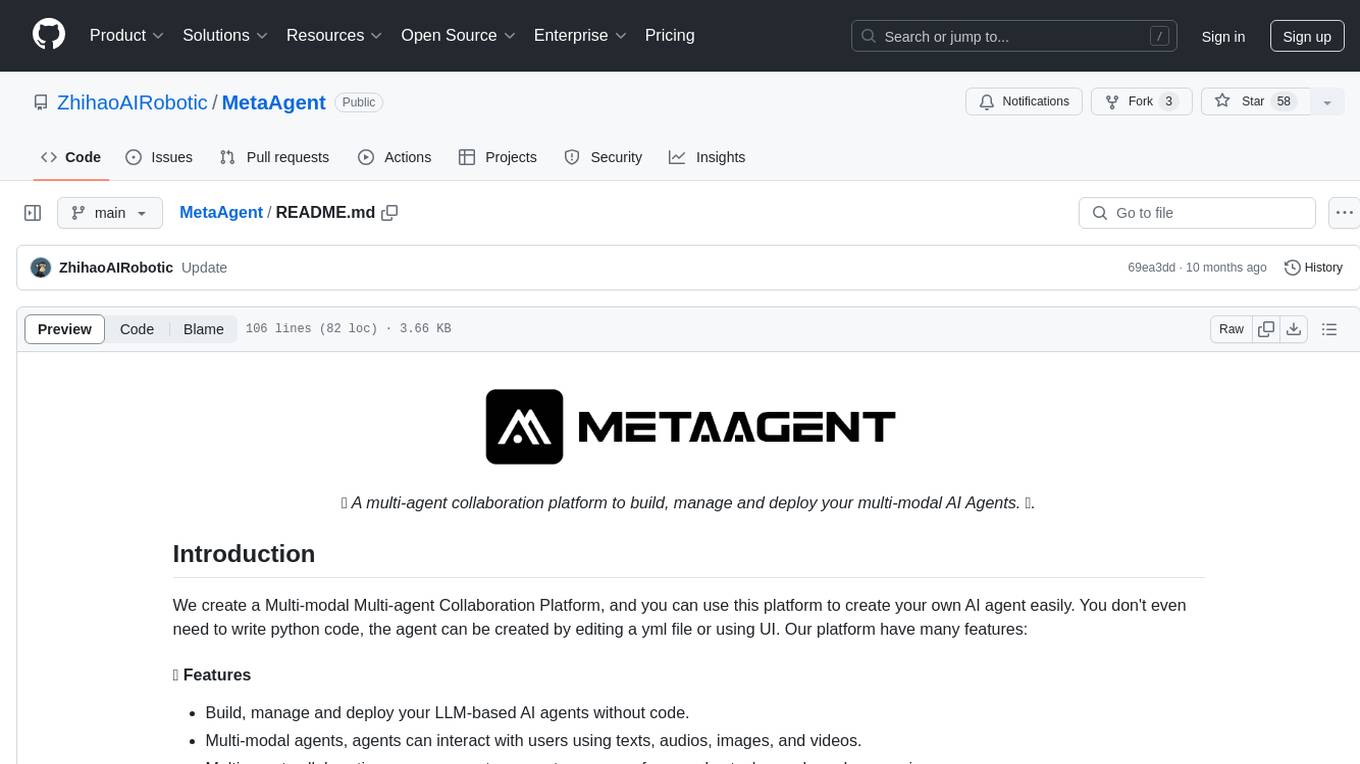
MetaAgent
MetaAgent is a multi-agent collaboration platform designed to build, manage, and deploy multi-modal AI agents without the need for coding. Users can easily create AI agents by editing a yml file or using the provided UI. The platform supports features such as building LLM-based AI agents, multi-modal interactions with users using texts, audios, images, and videos, creating a company of agents for complex tasks like drawing comics, vector database and knowledge embeddings, and upcoming features like UI for creating and using AI agents, fine-tuning, and RLHF. The tool simplifies the process of creating and deploying AI agents for various tasks.








